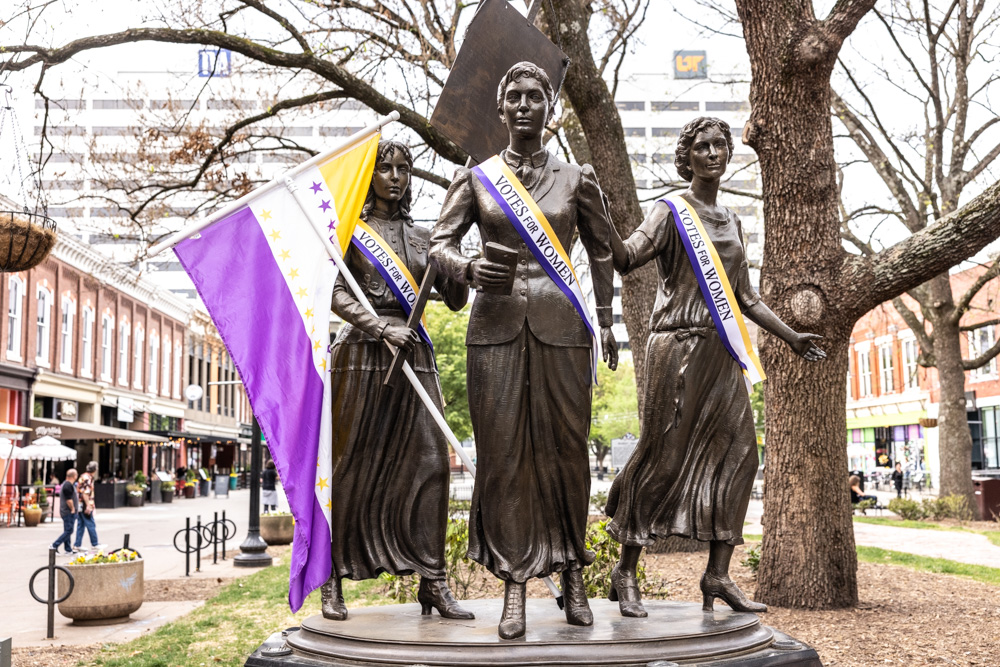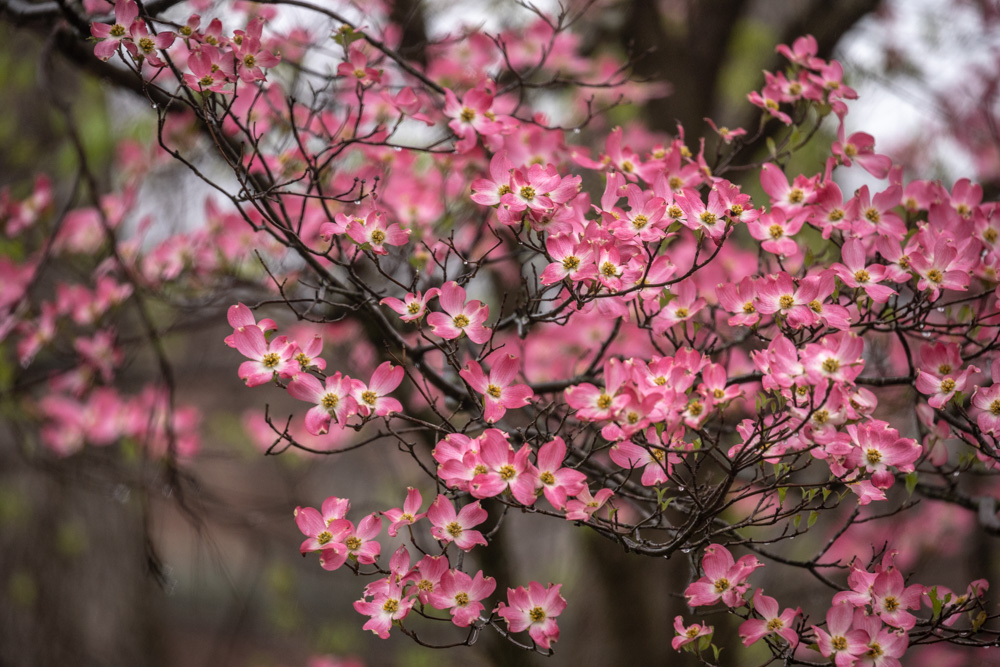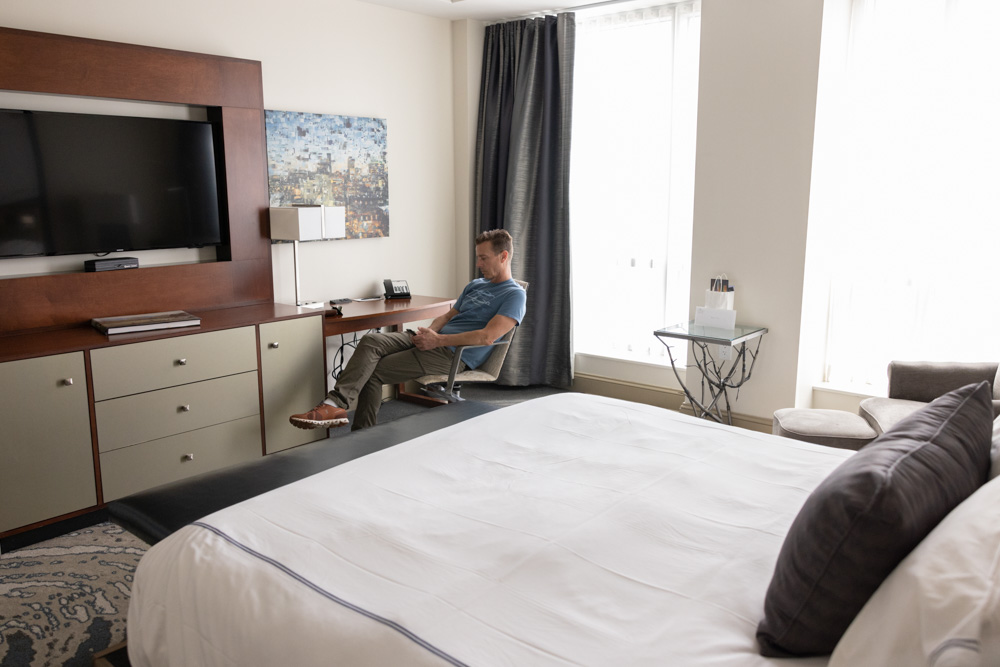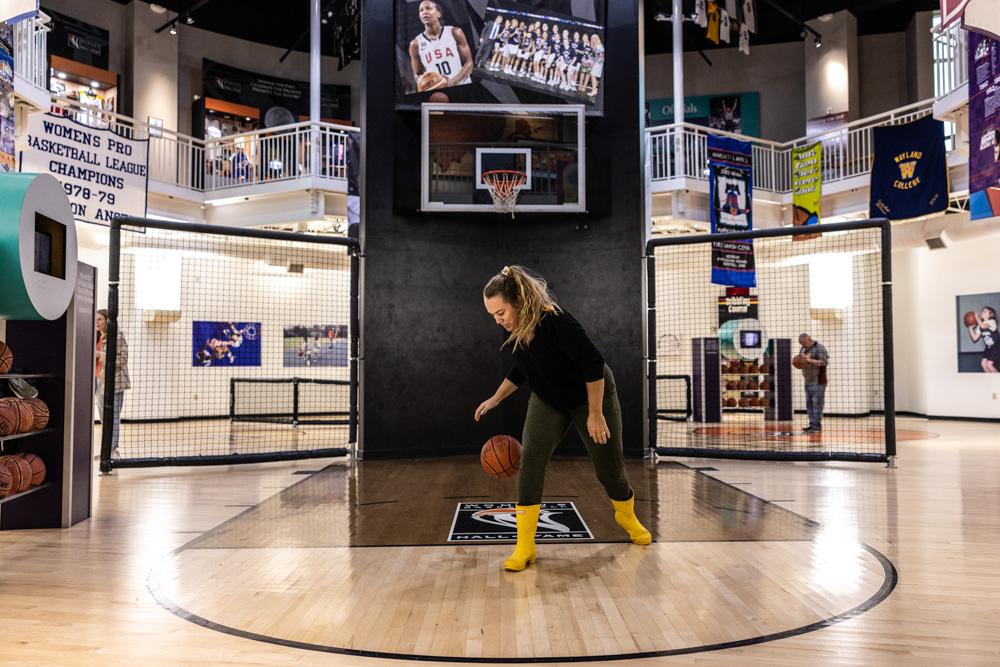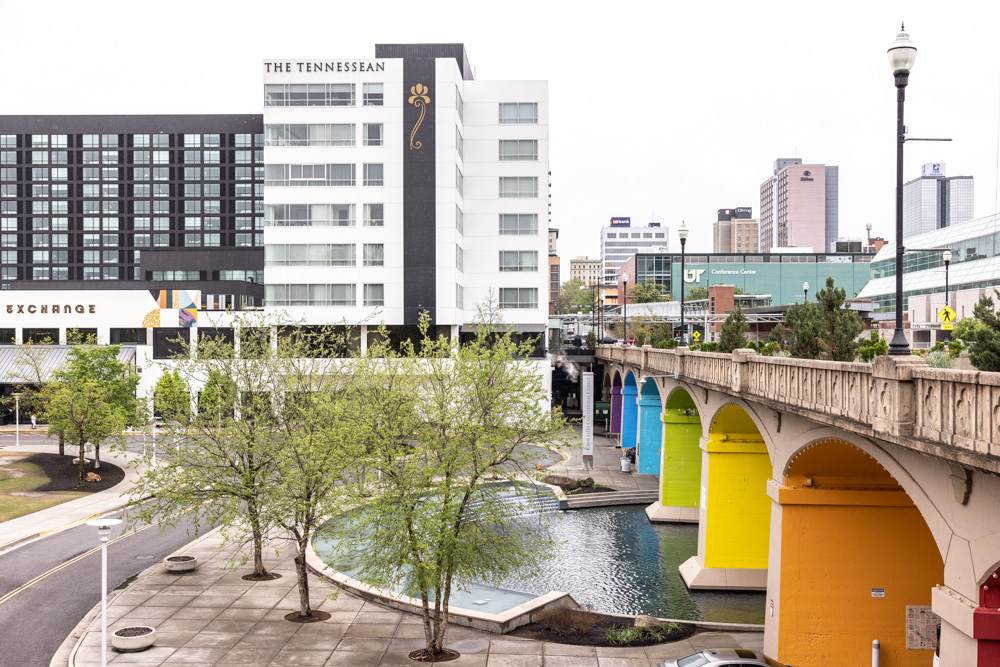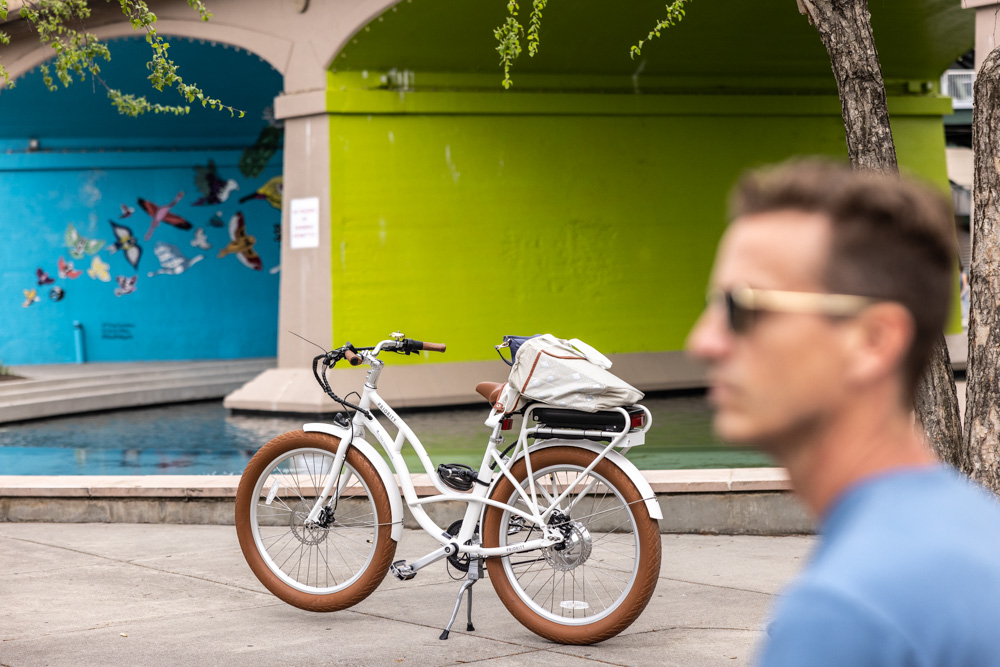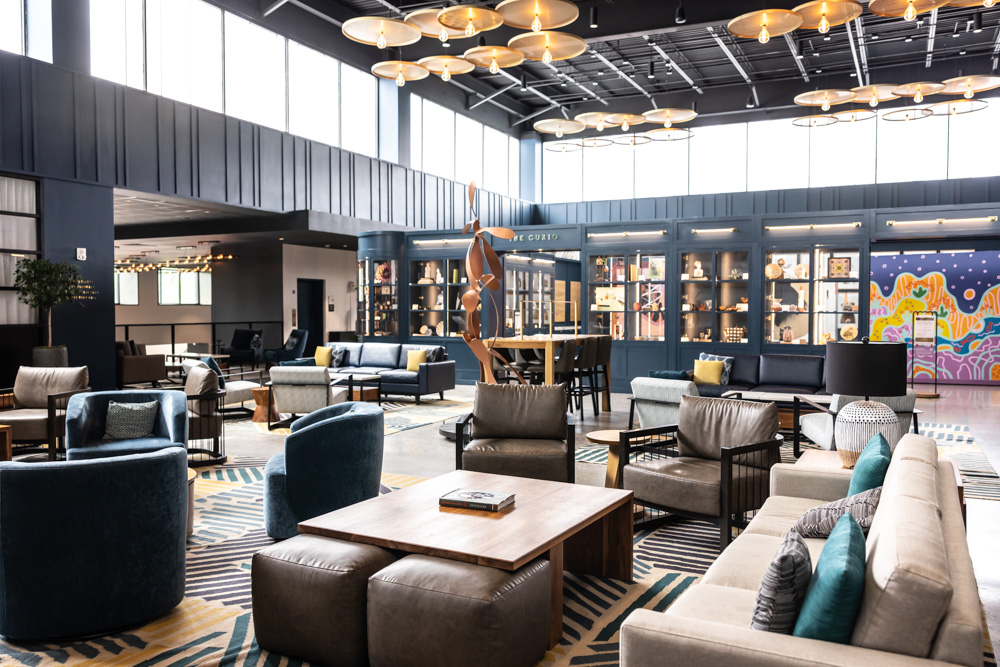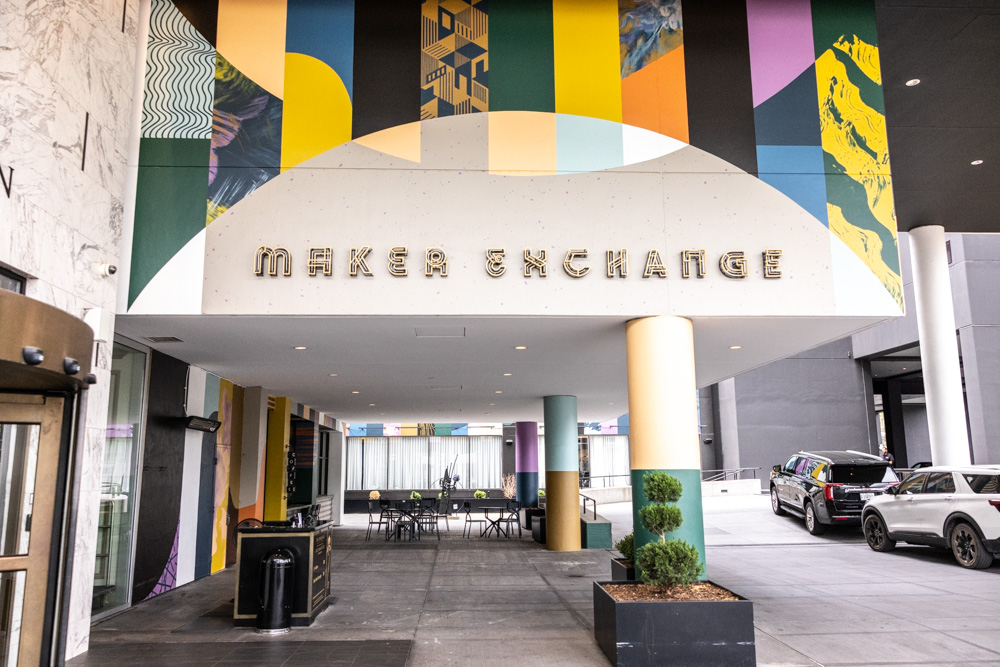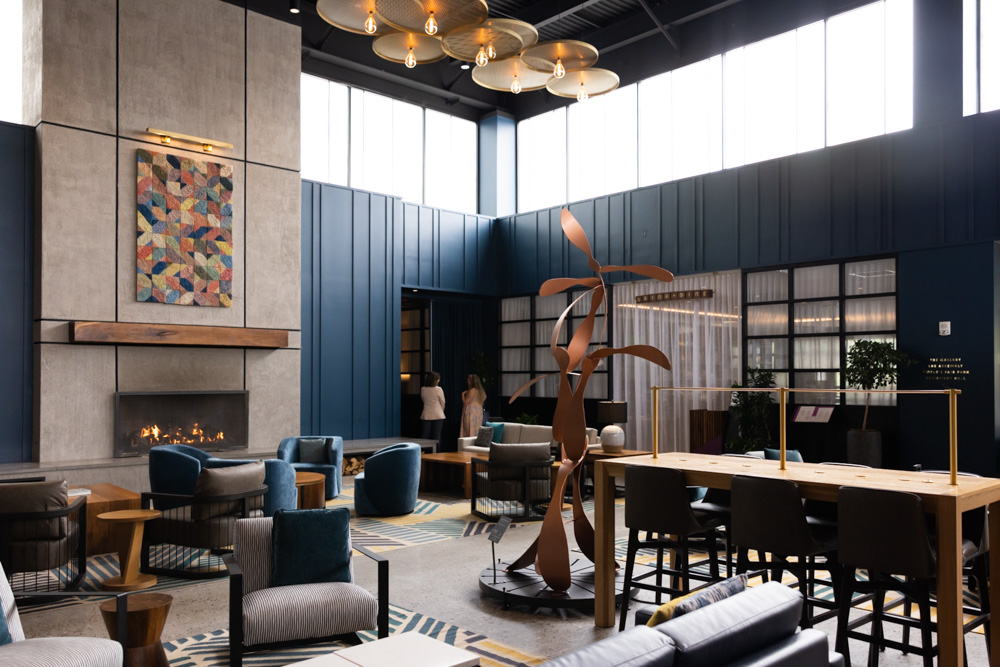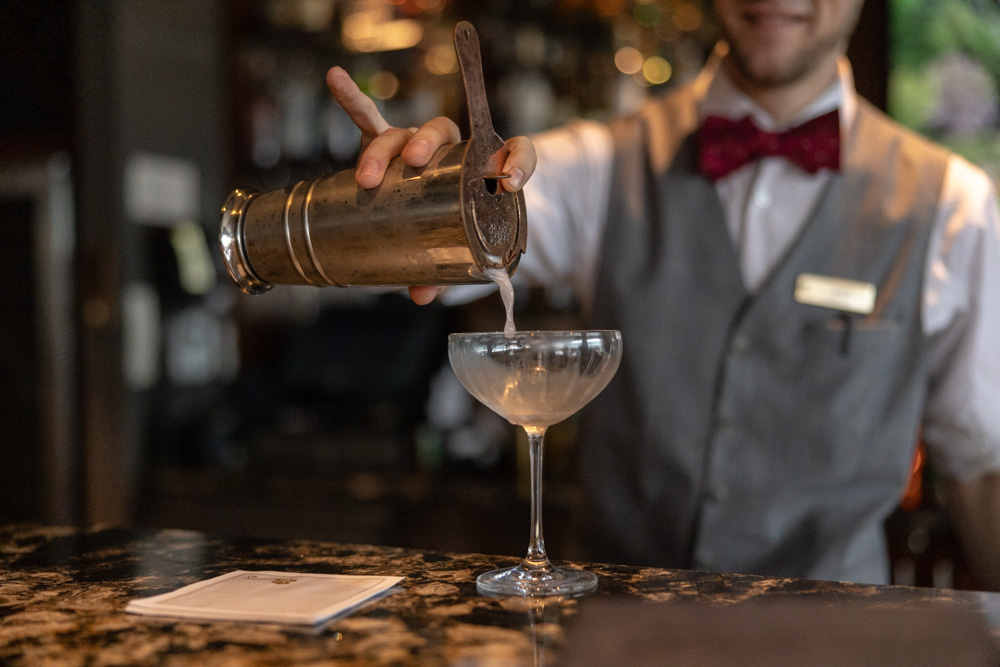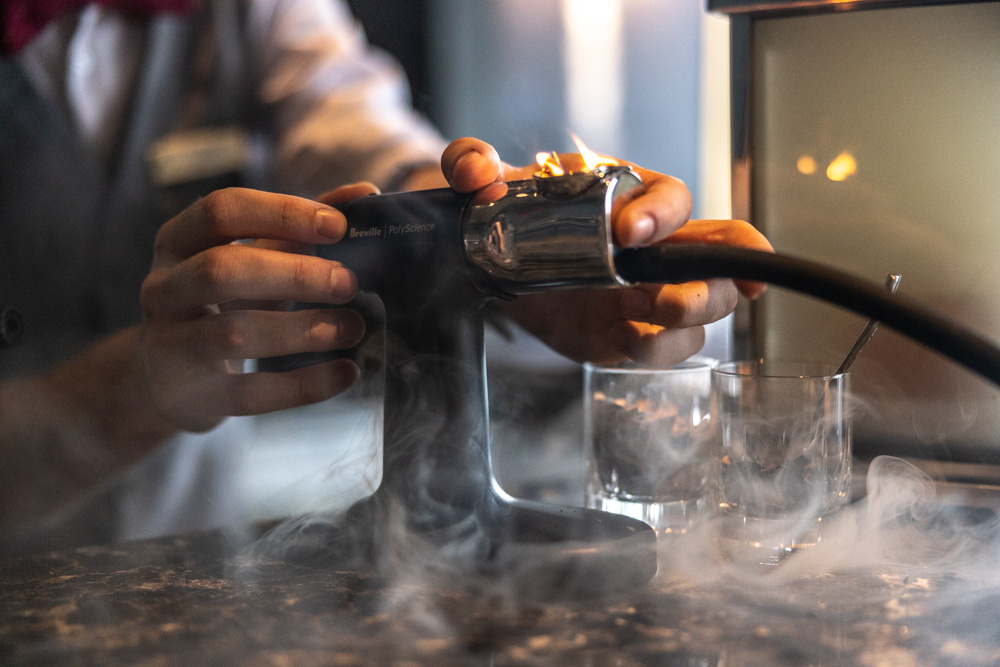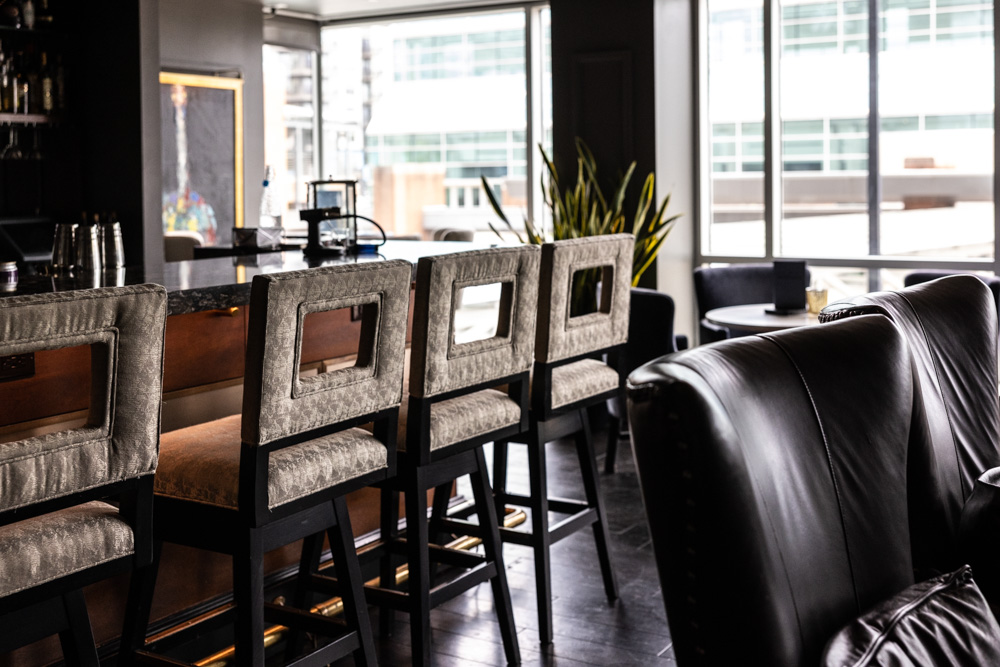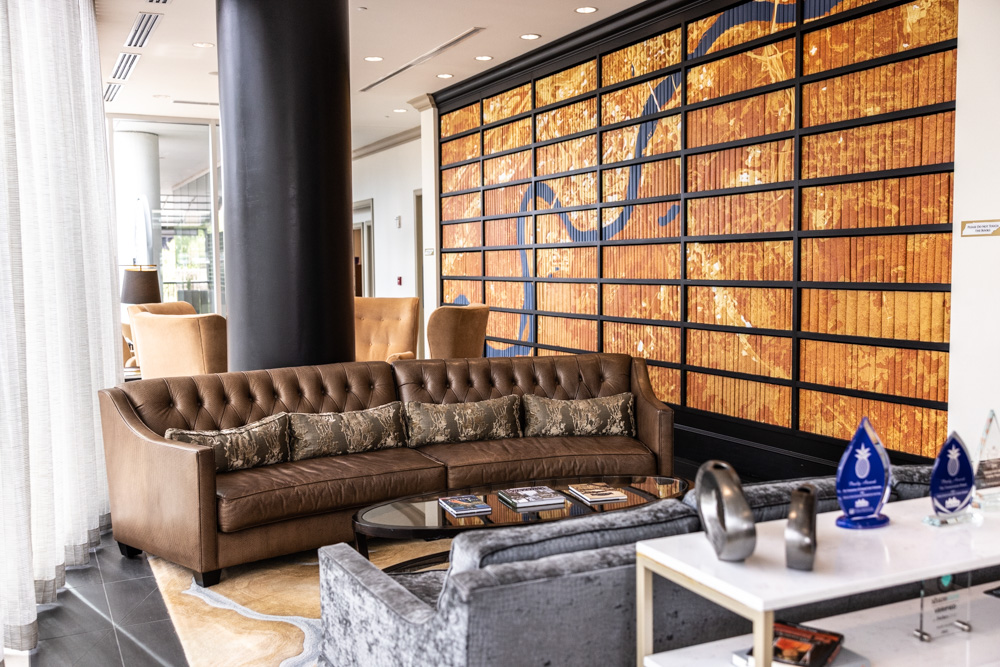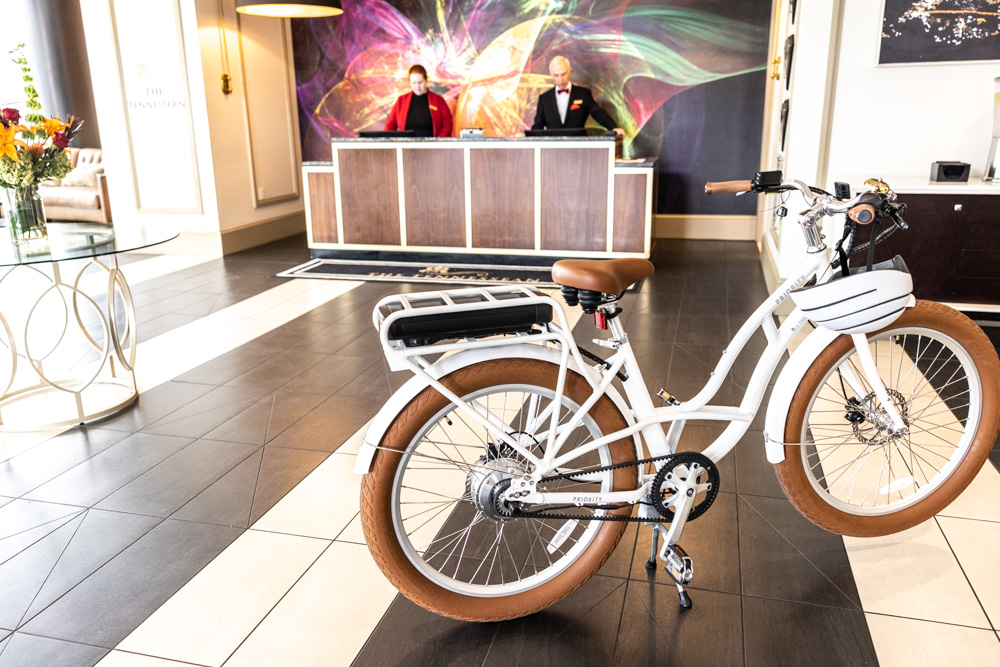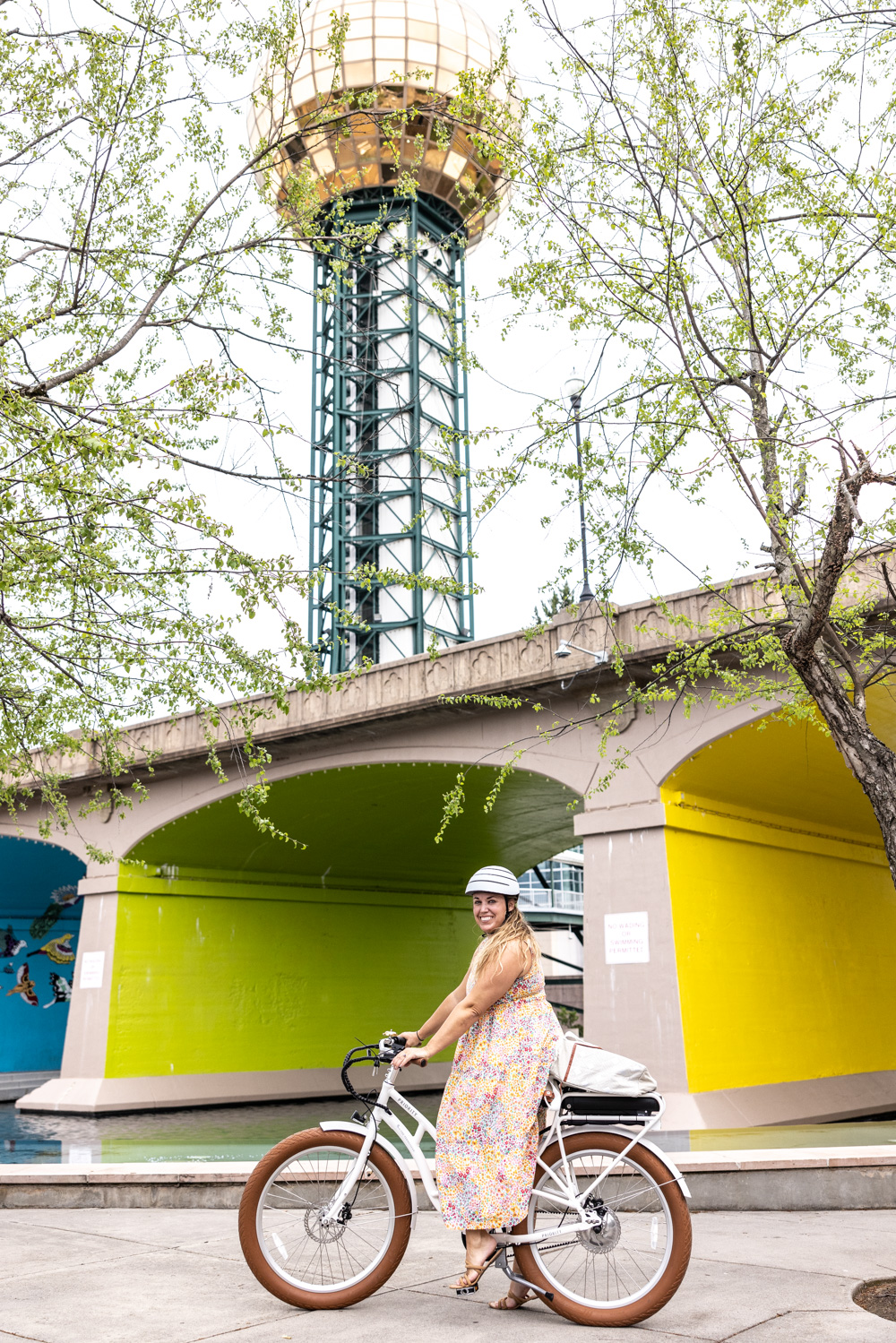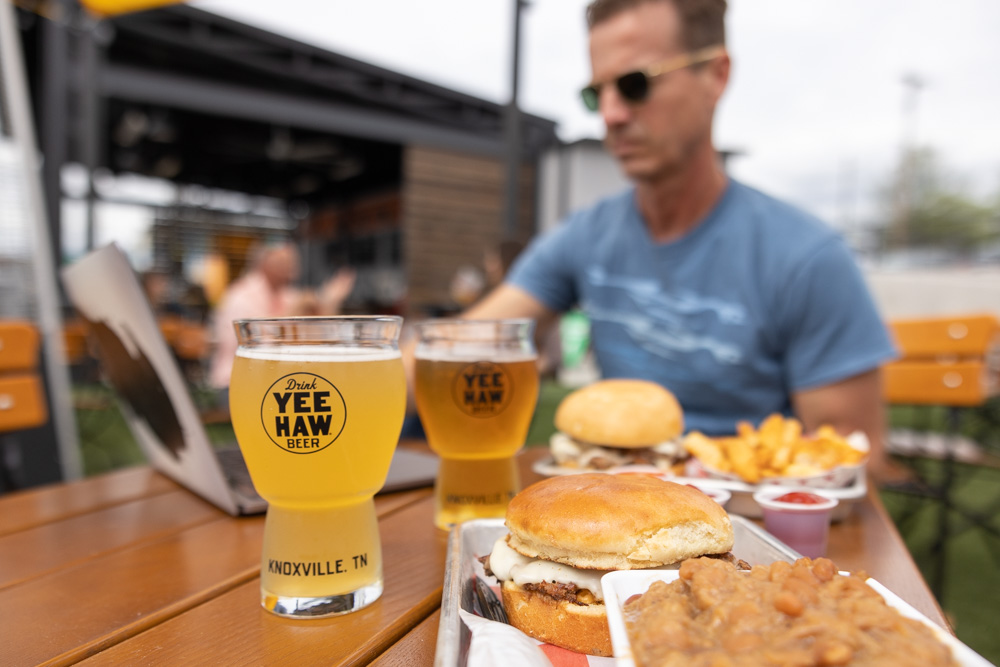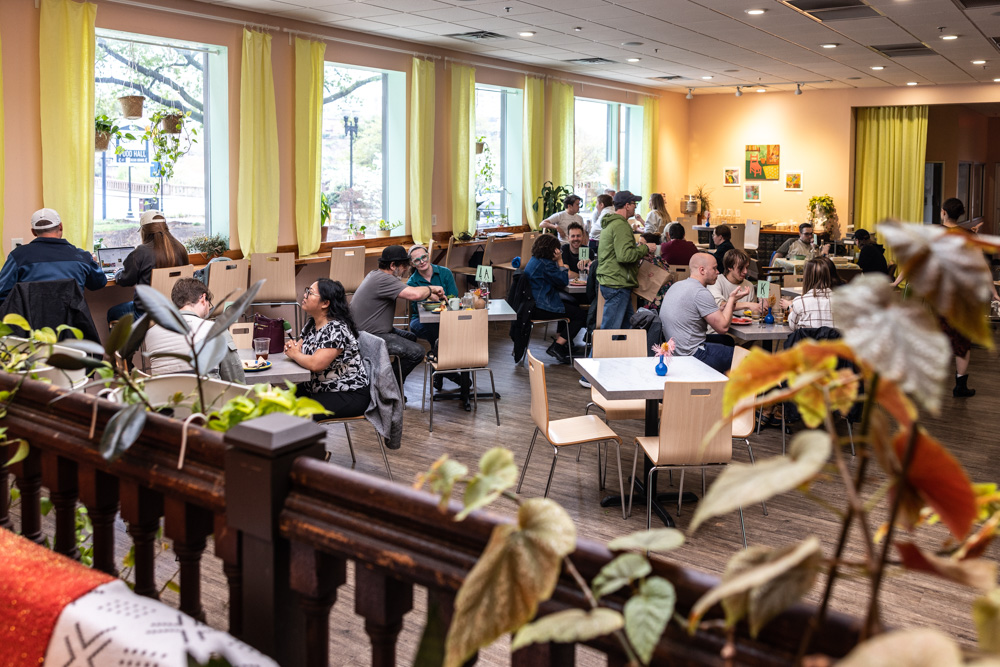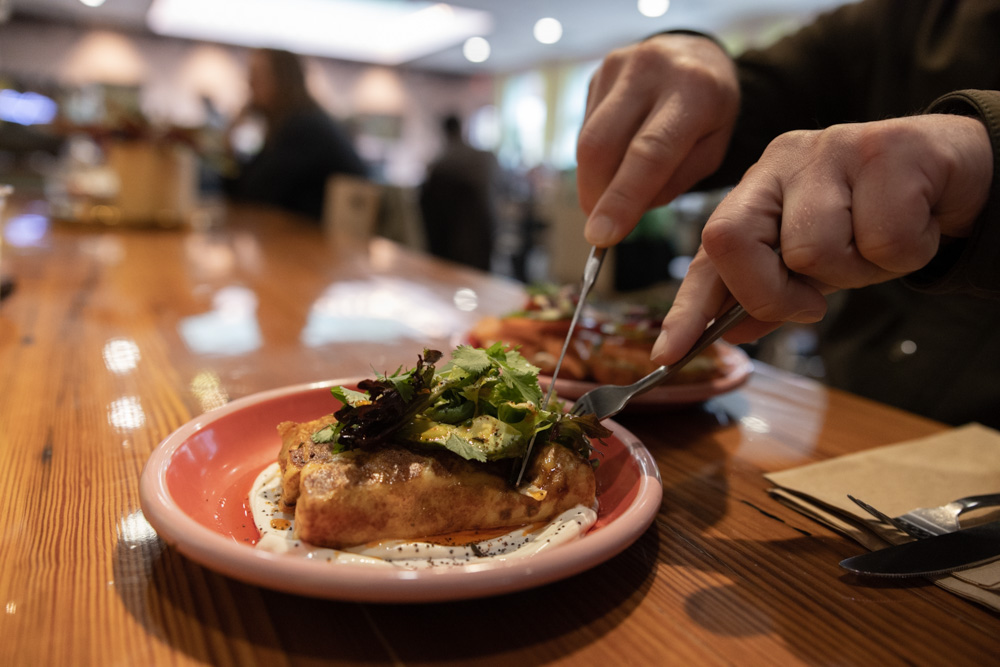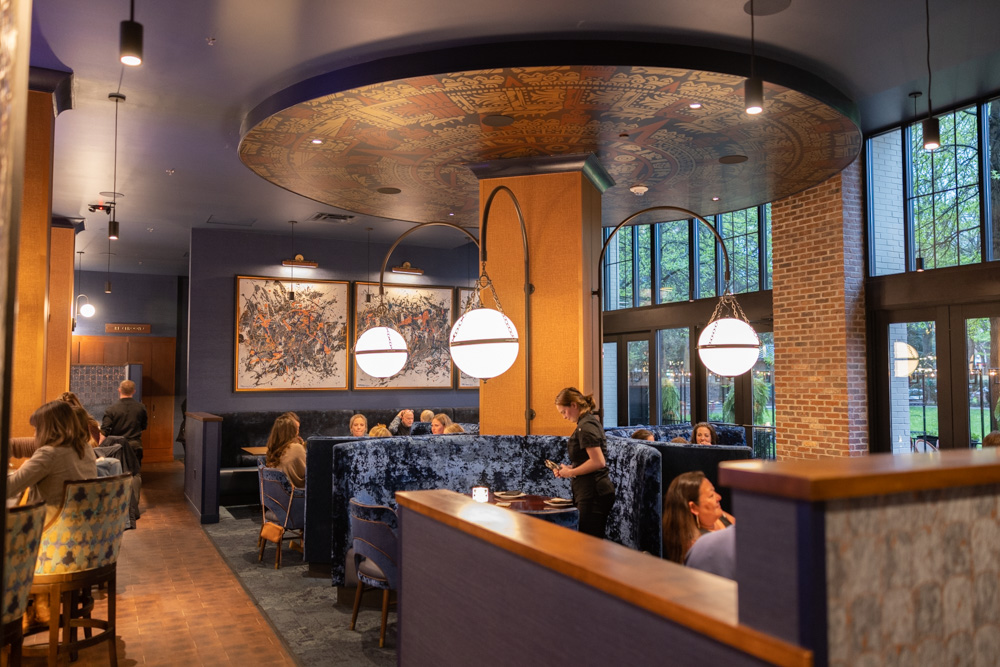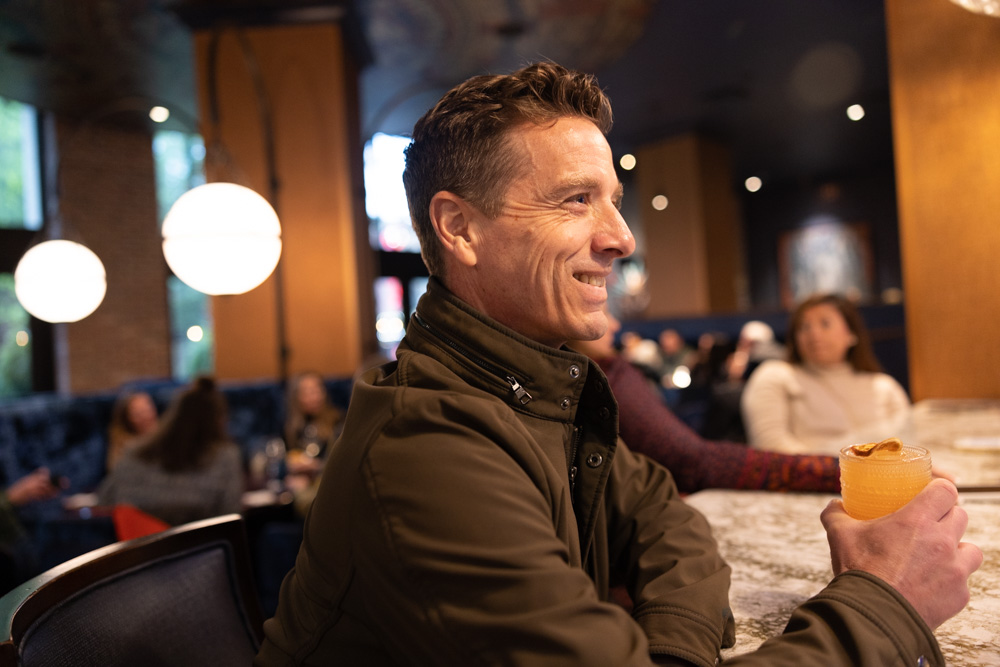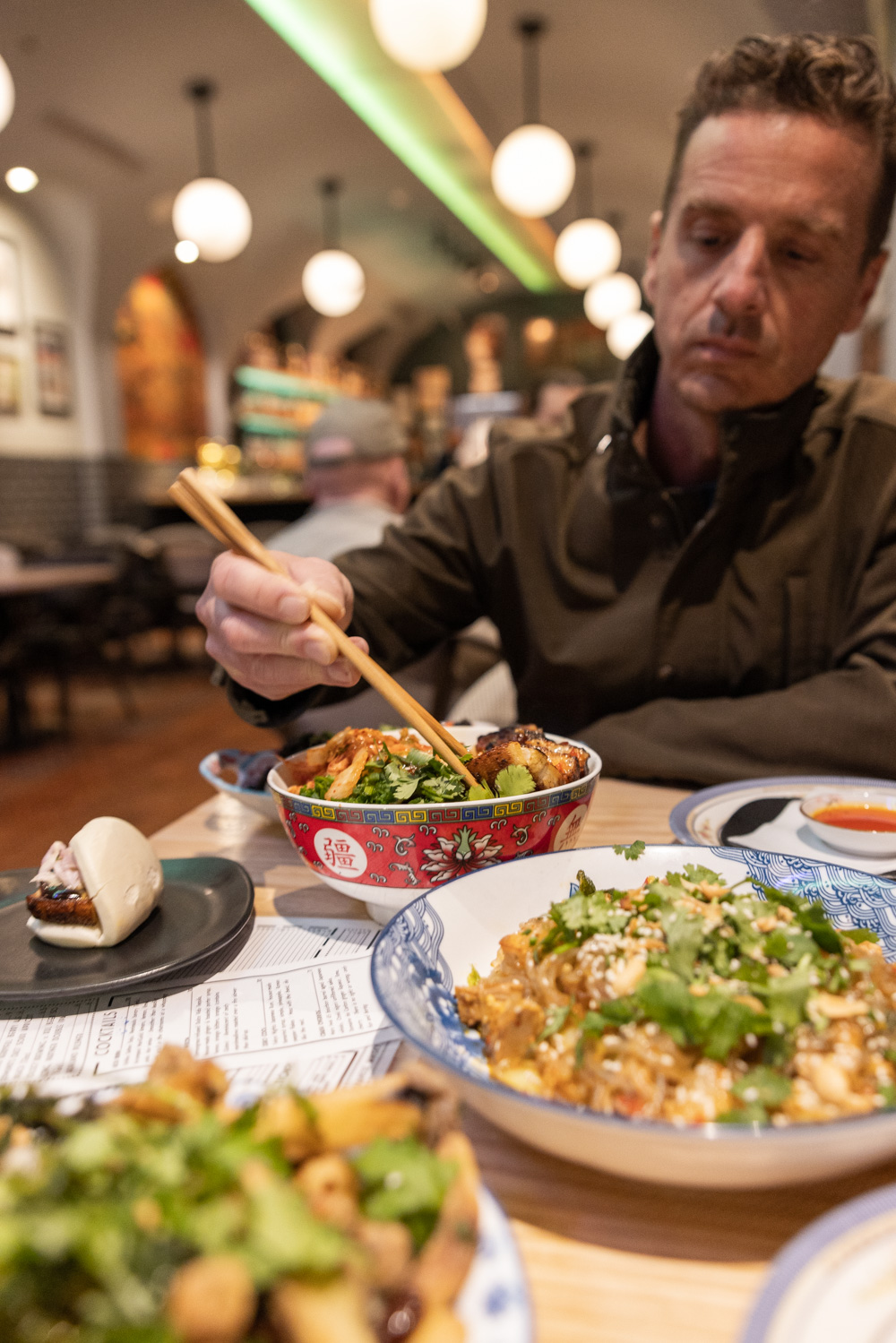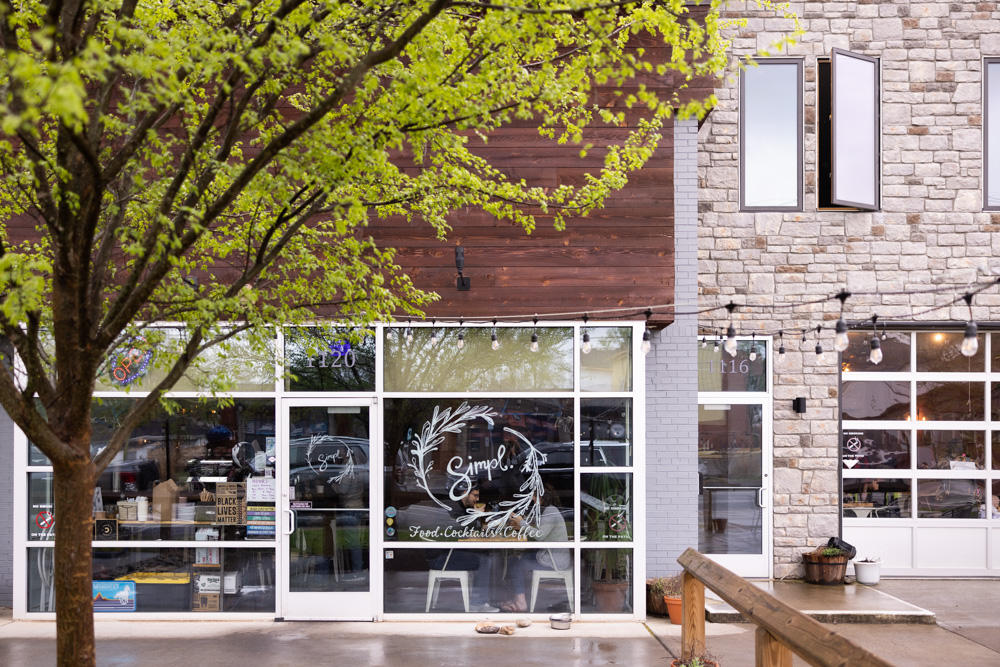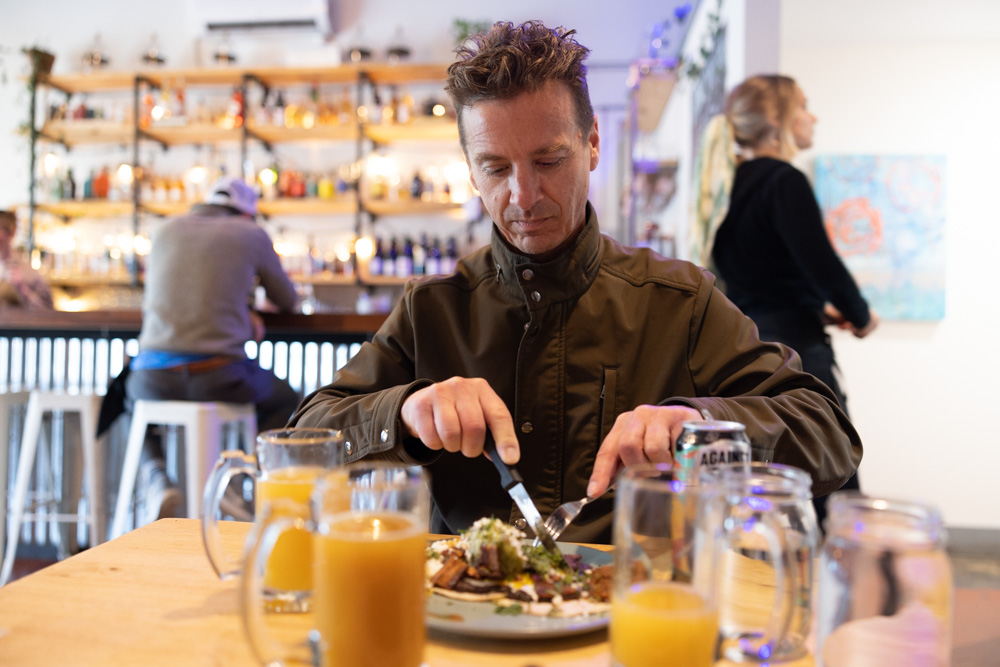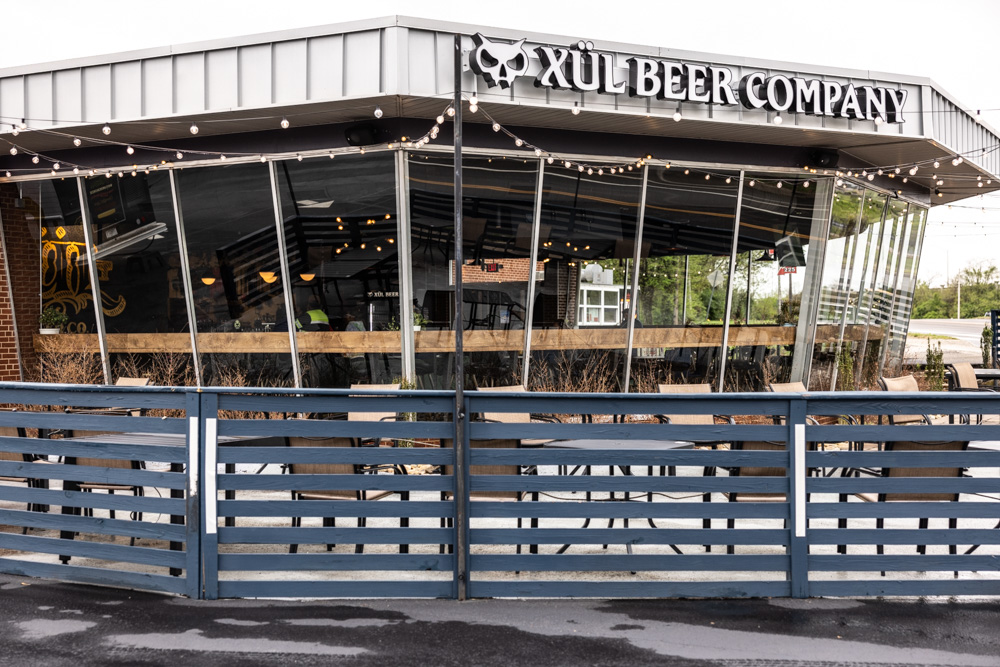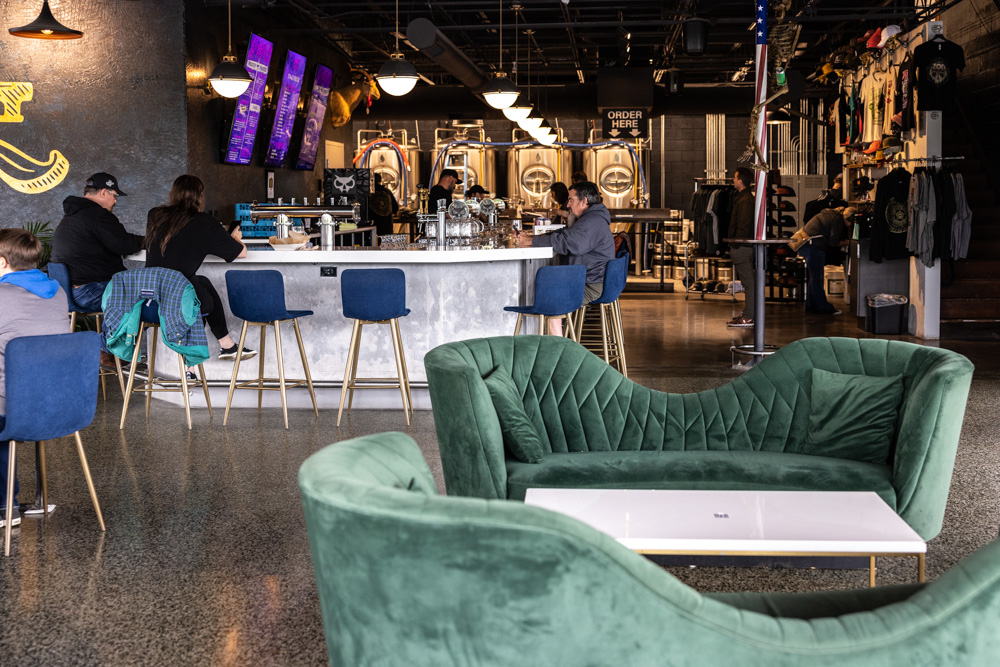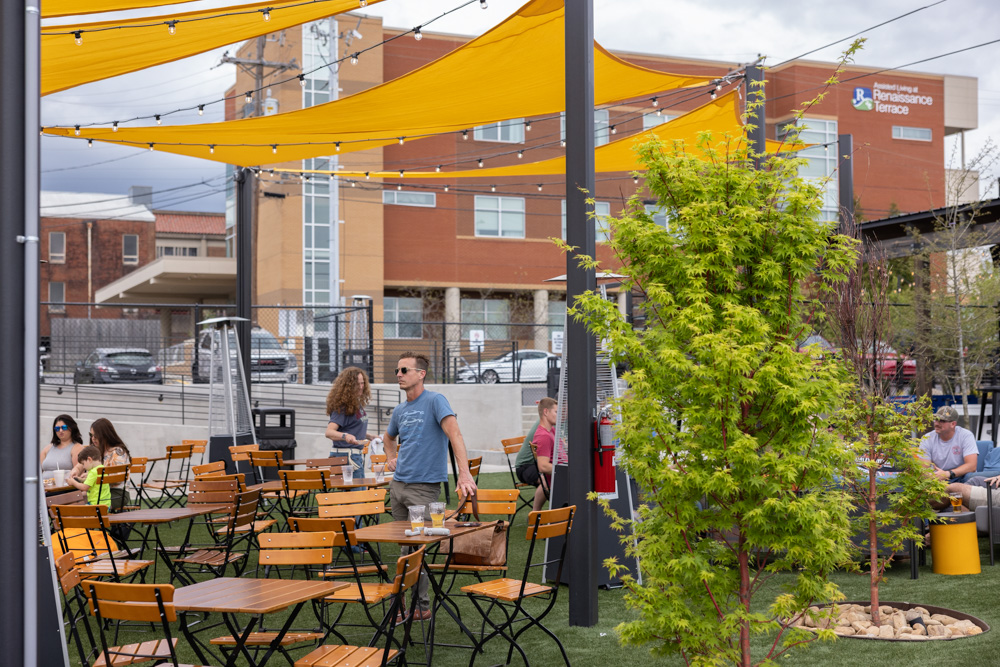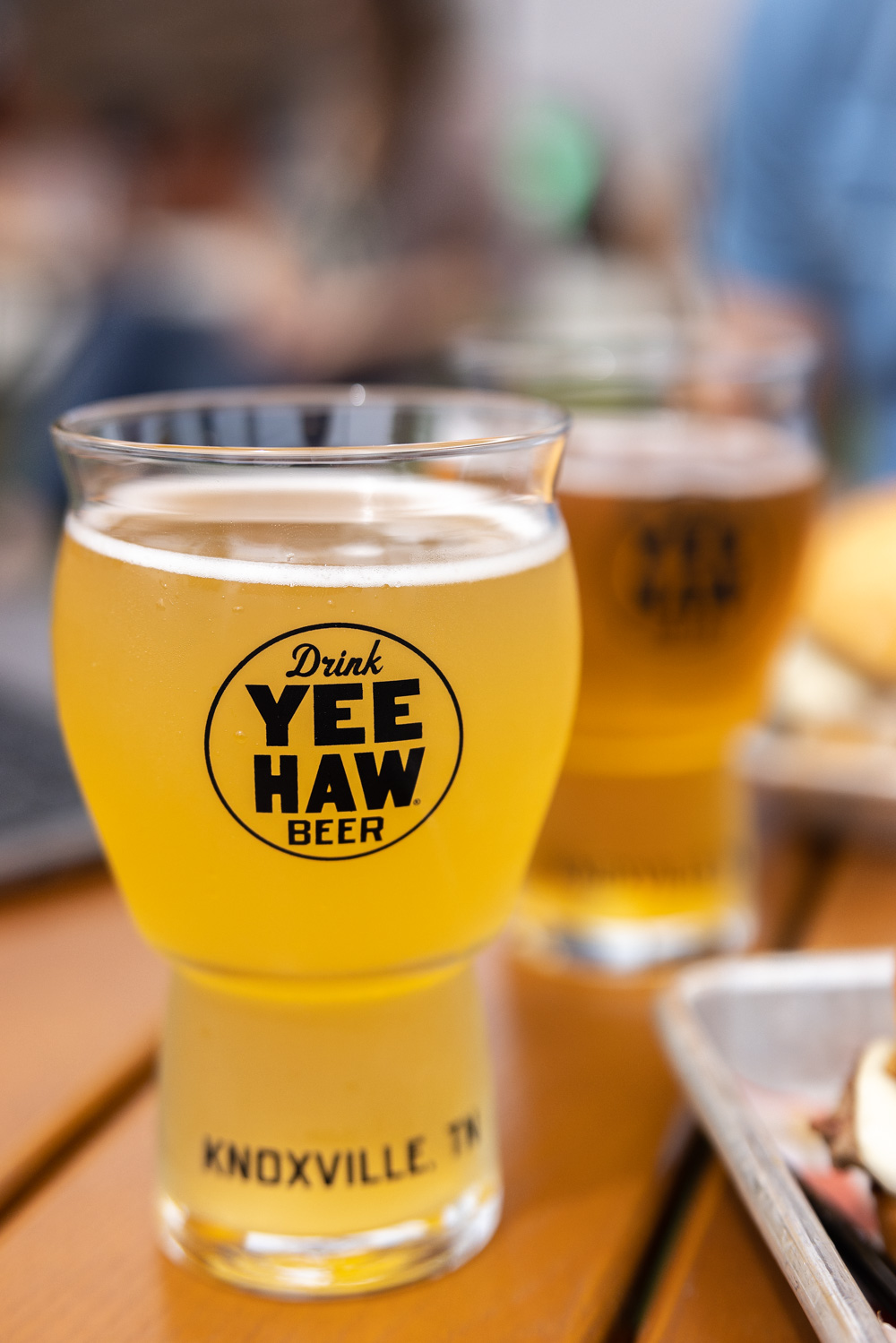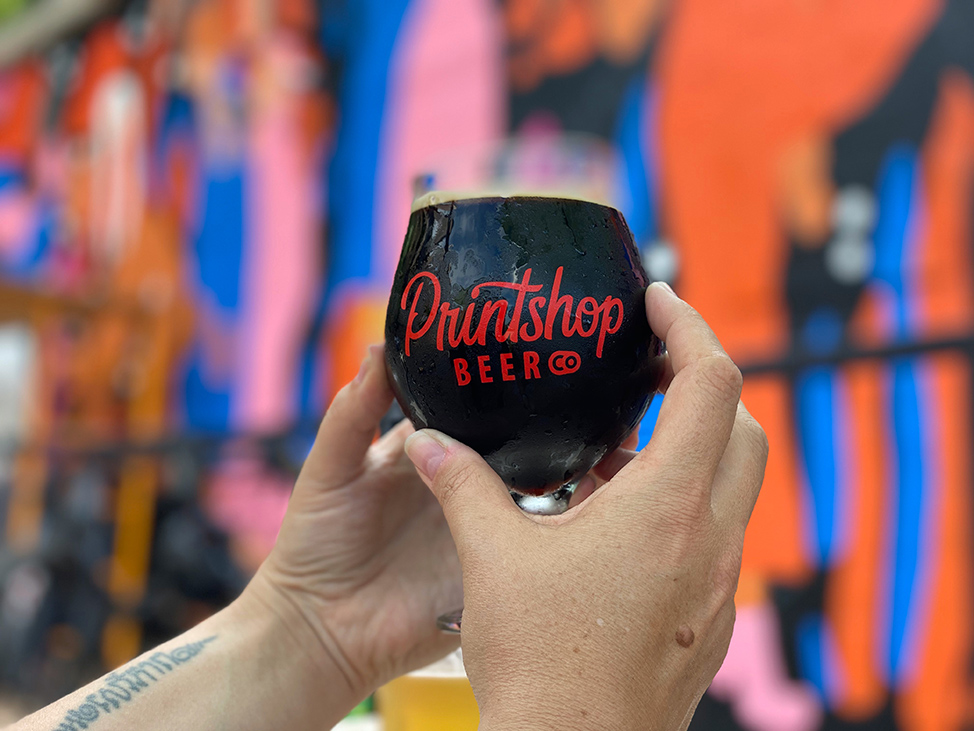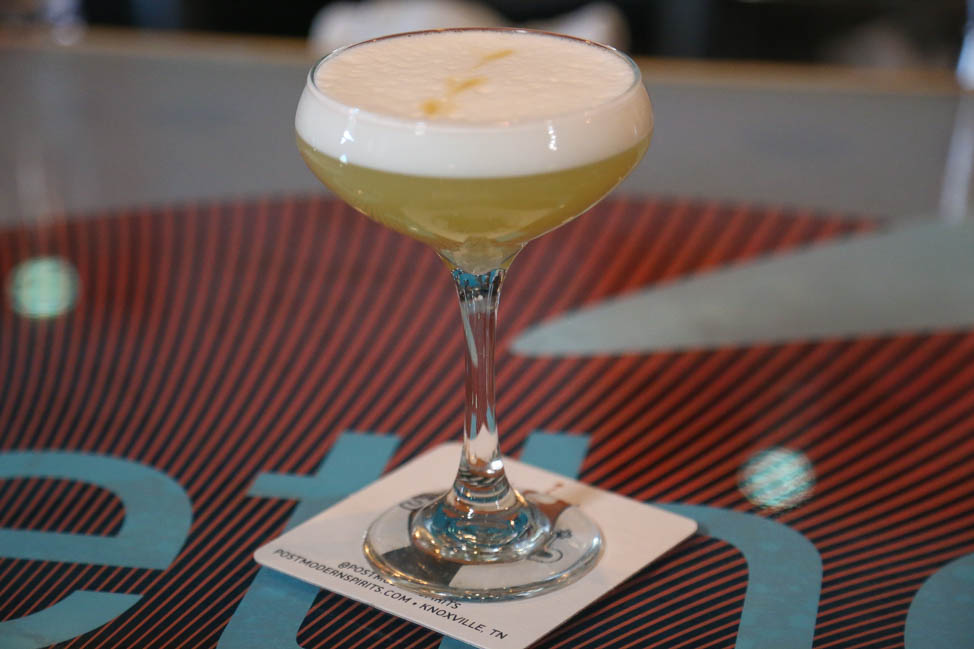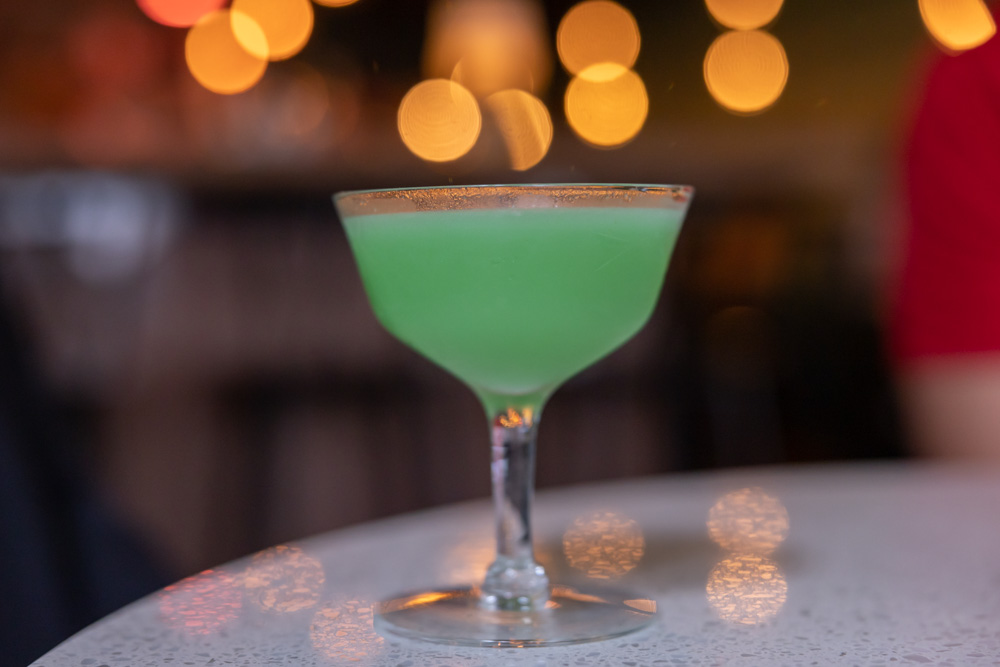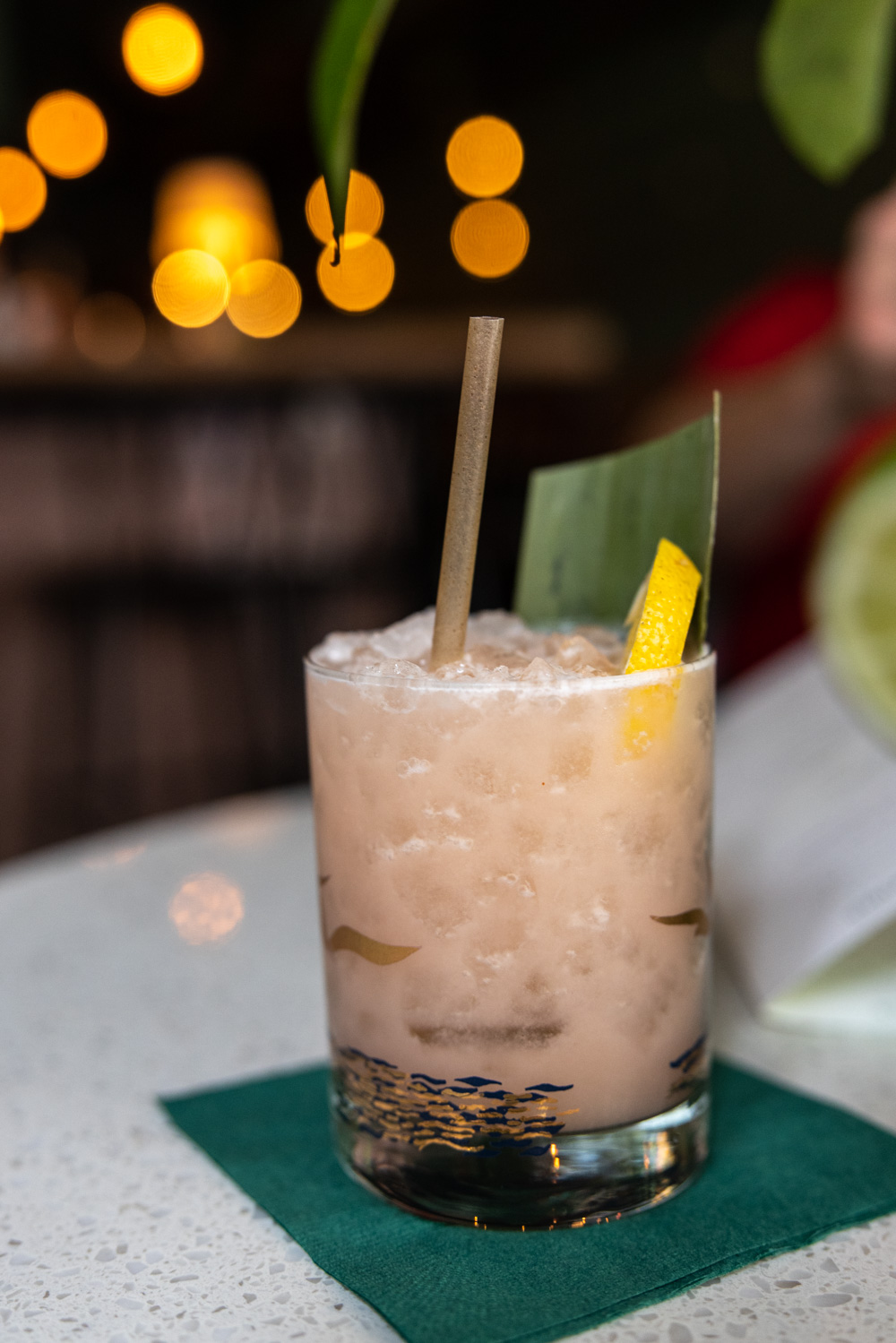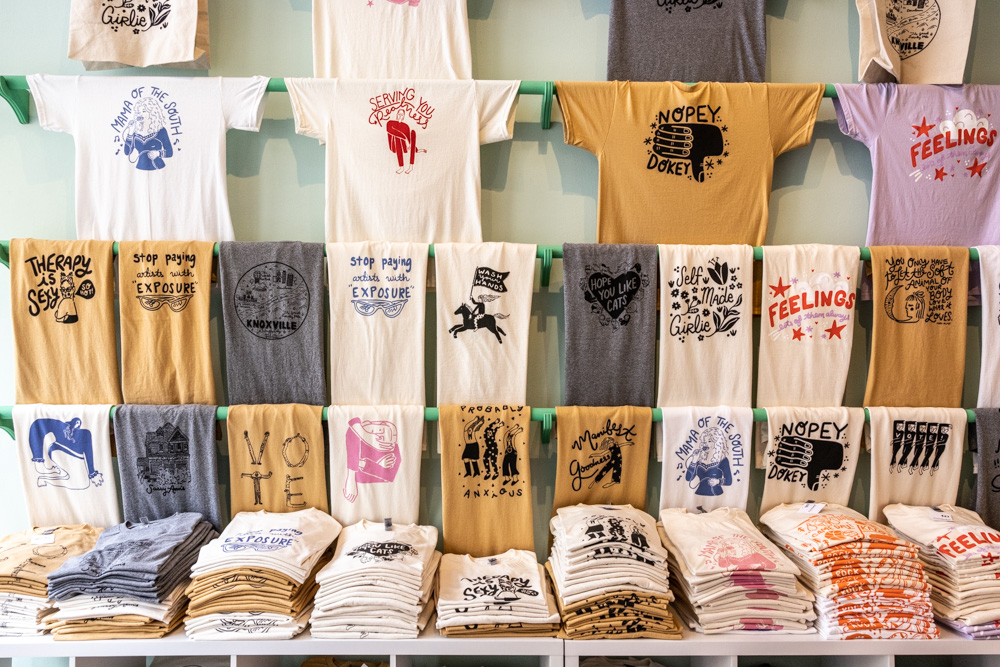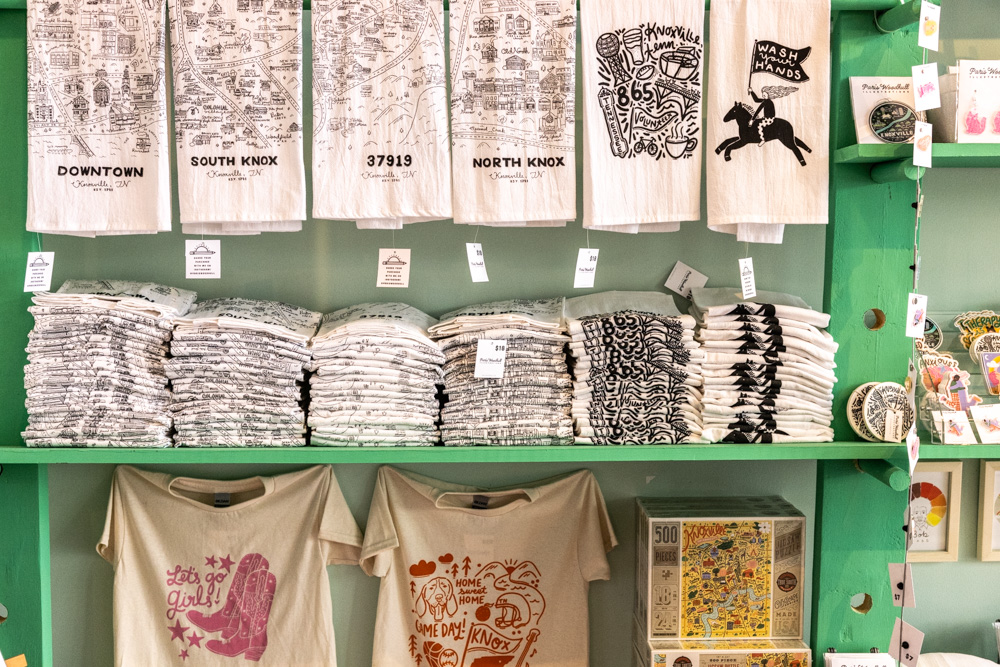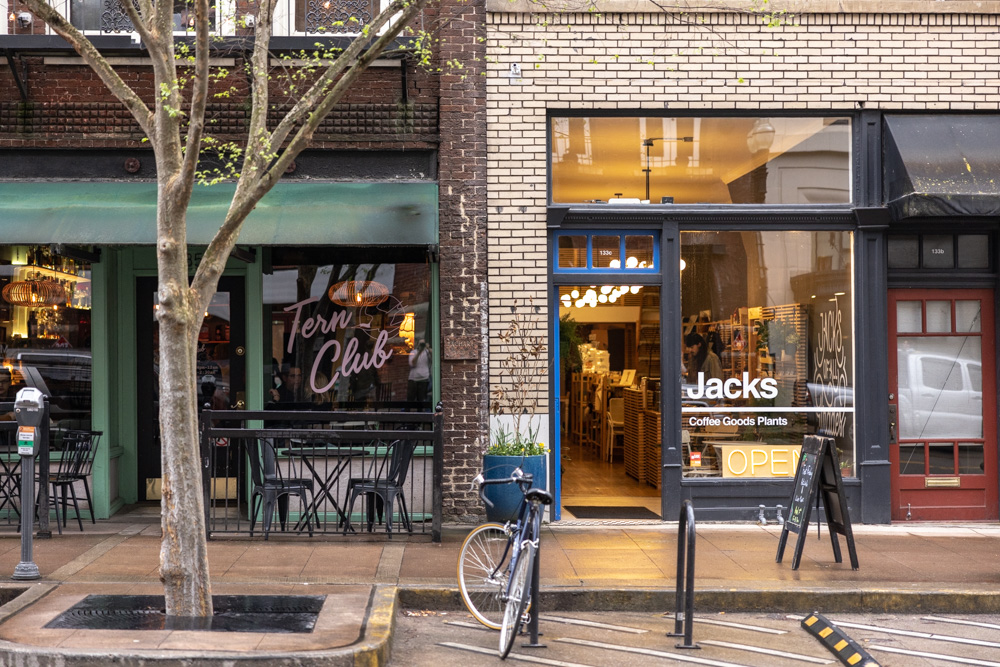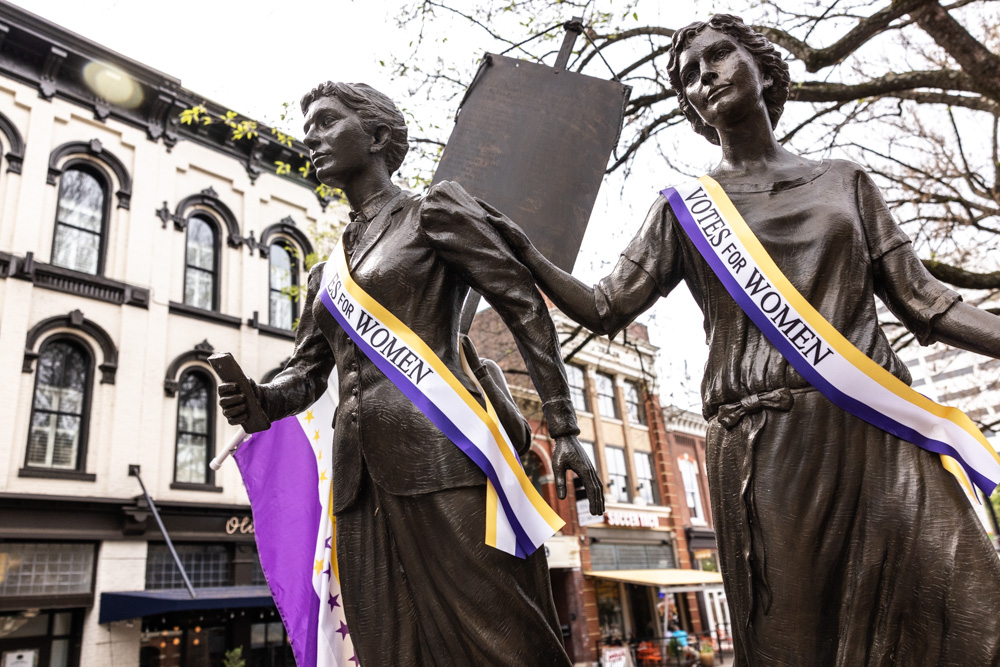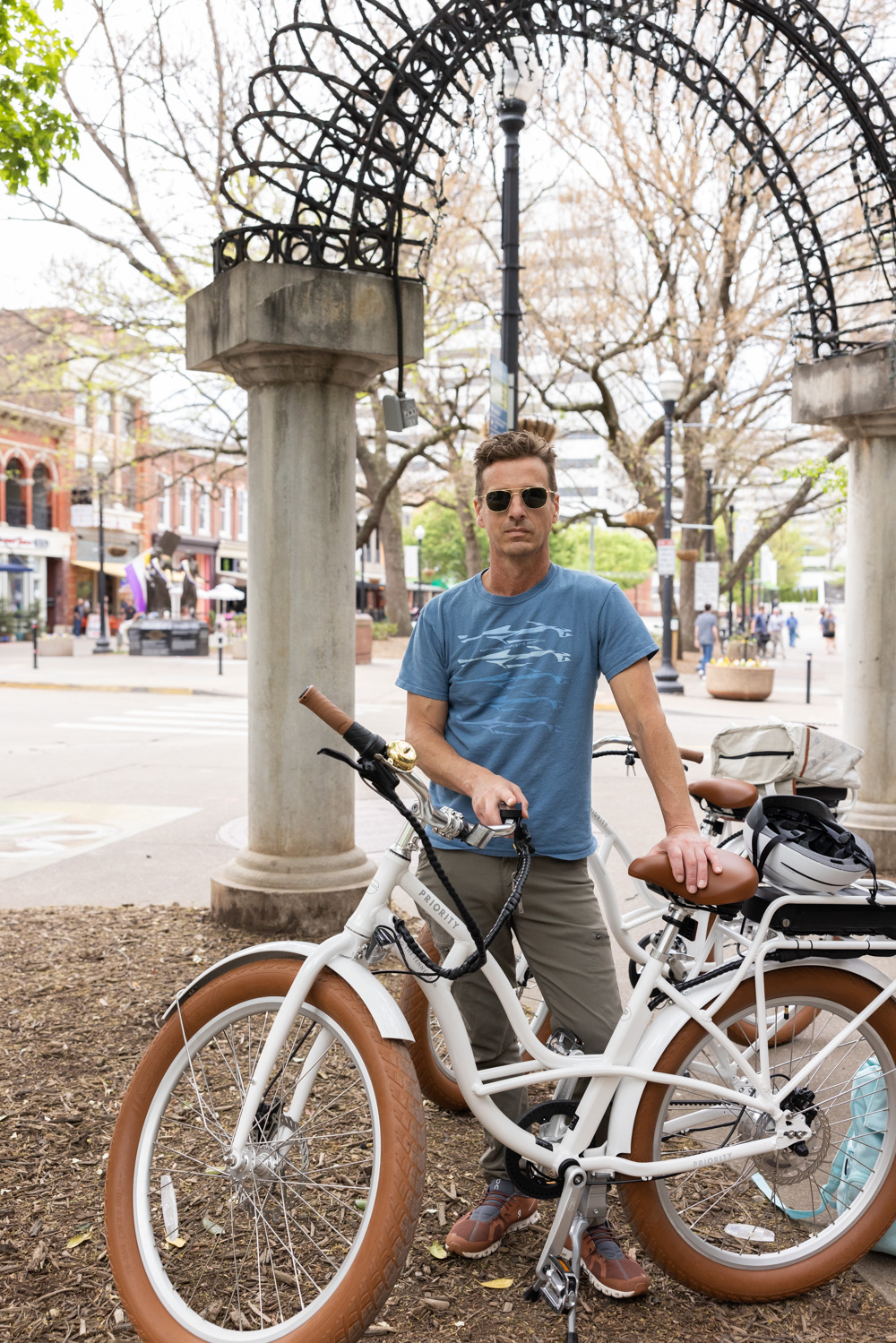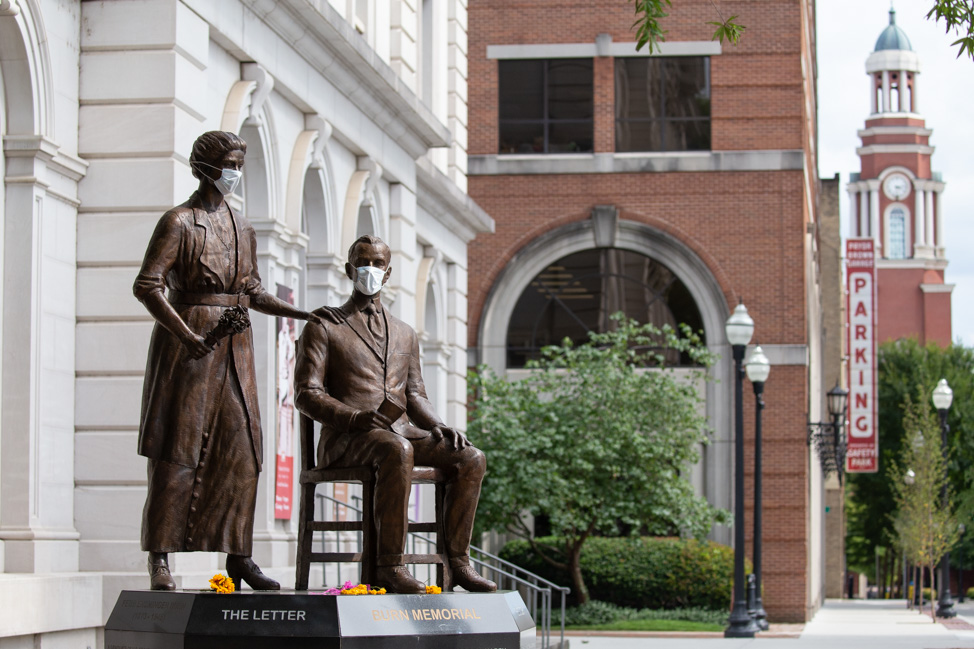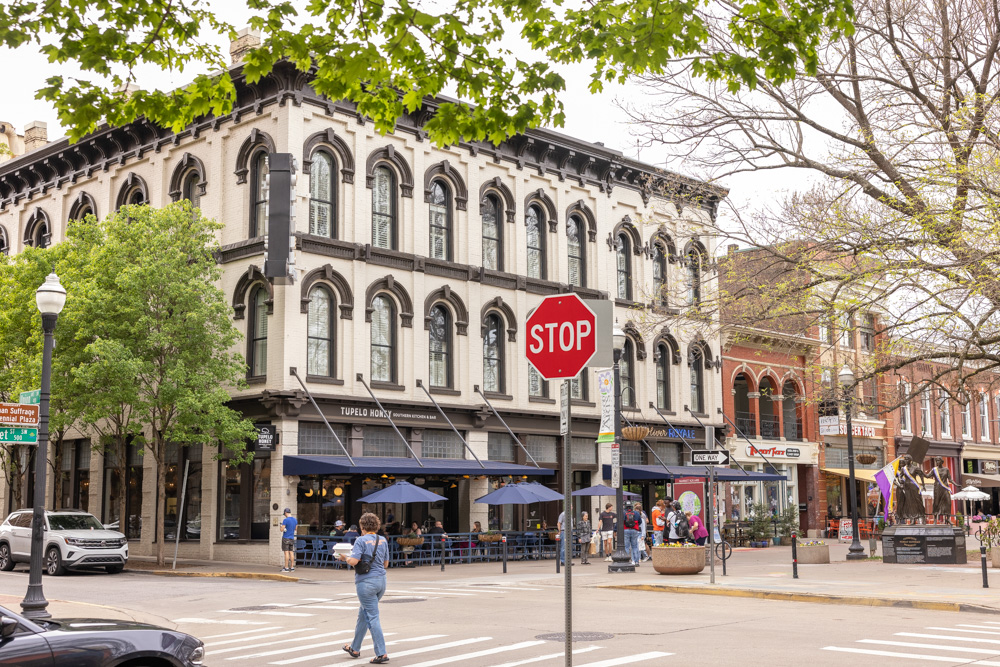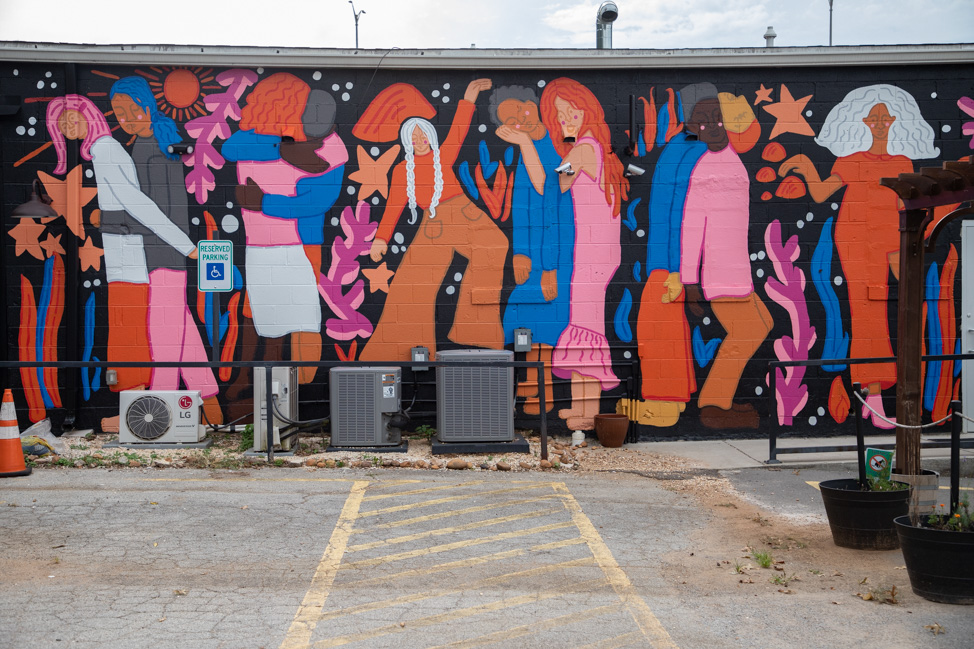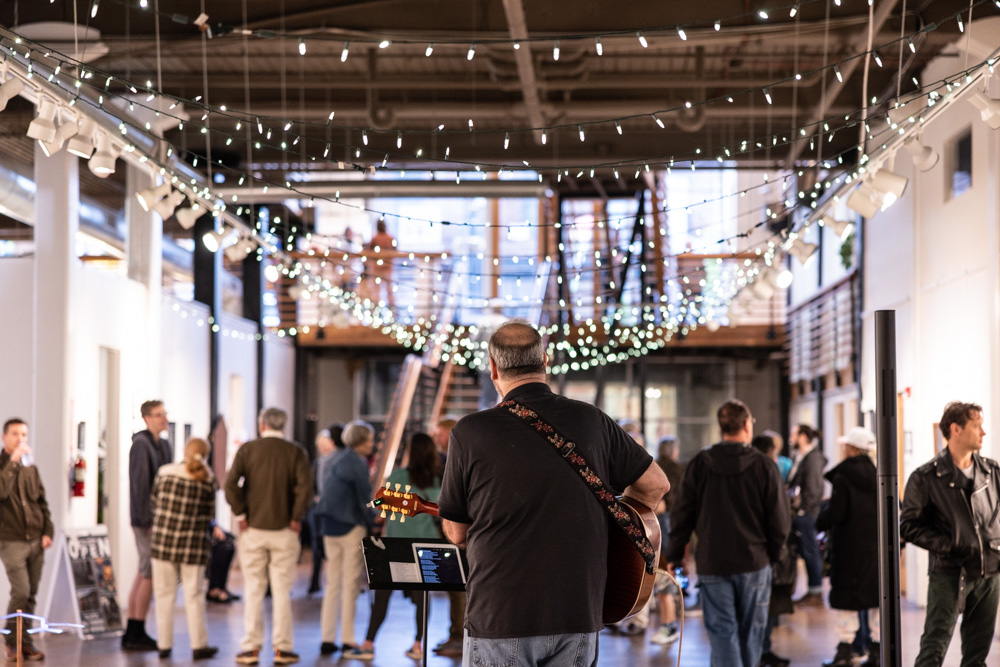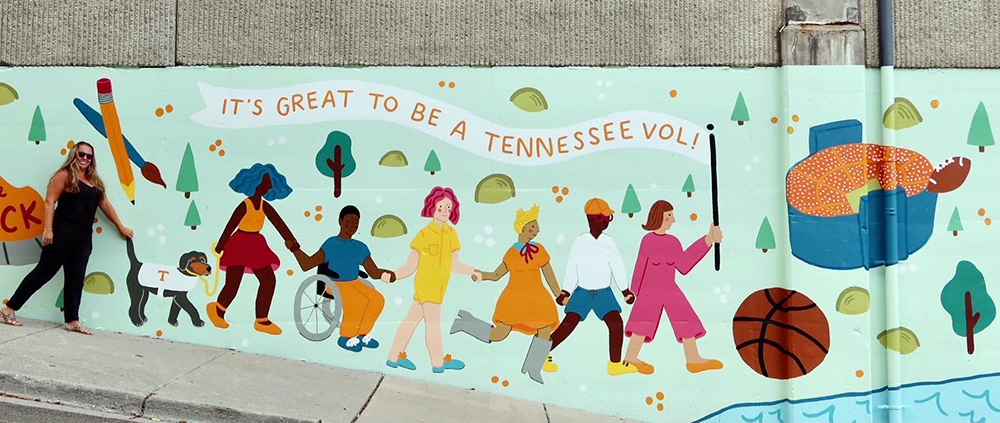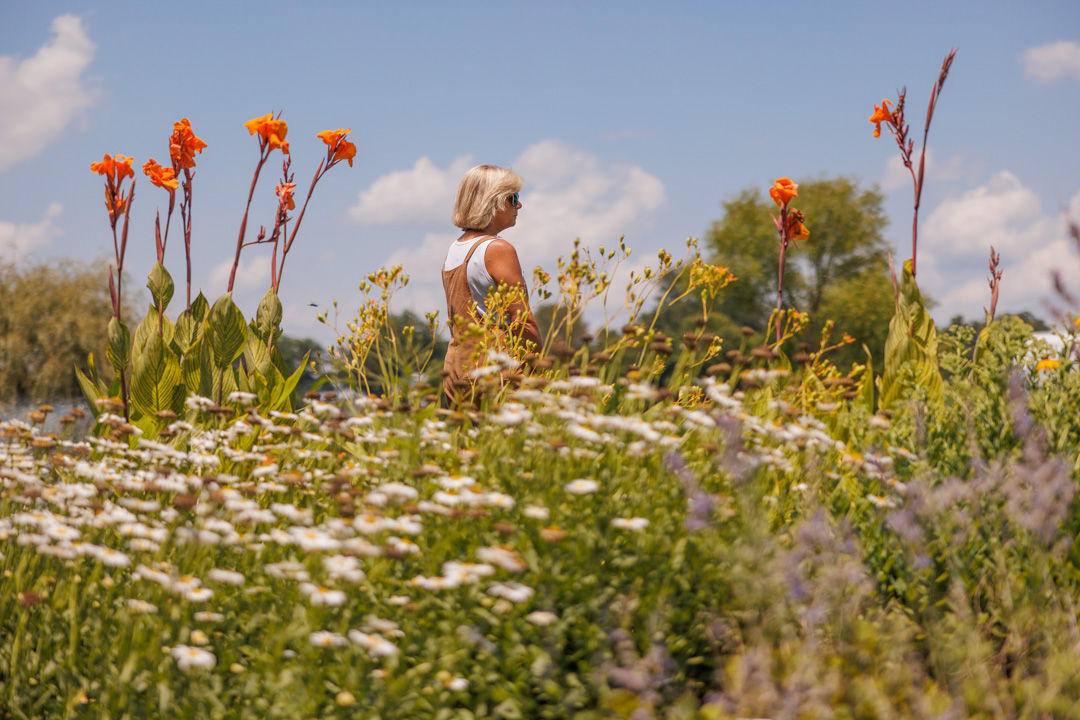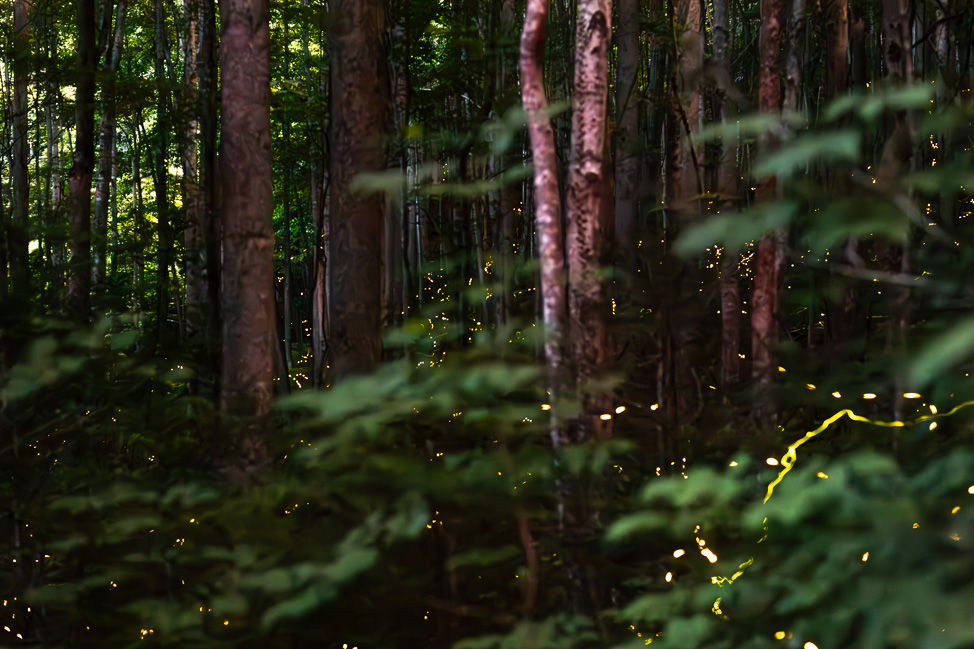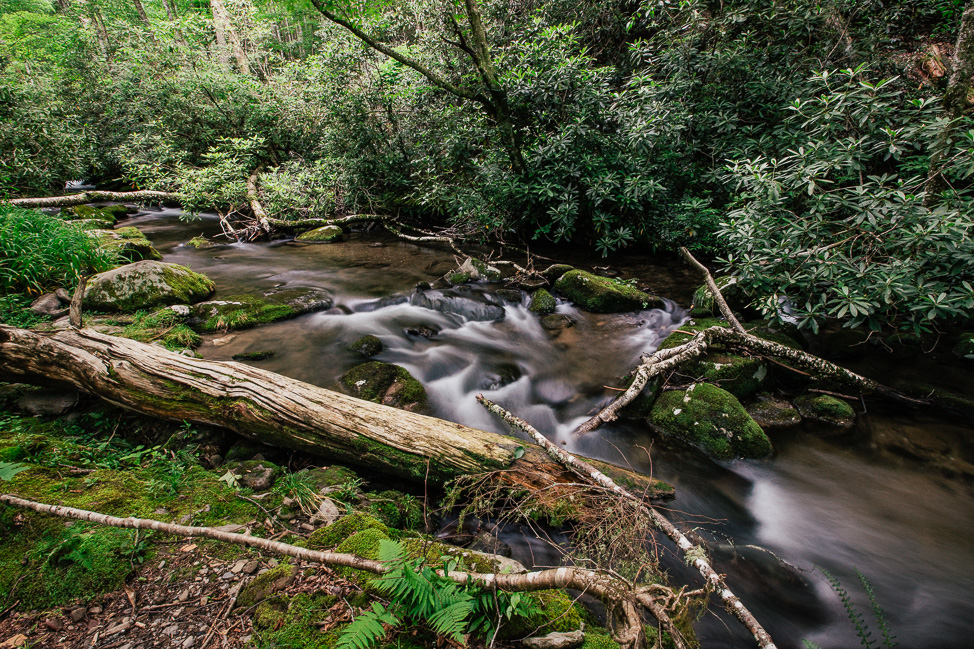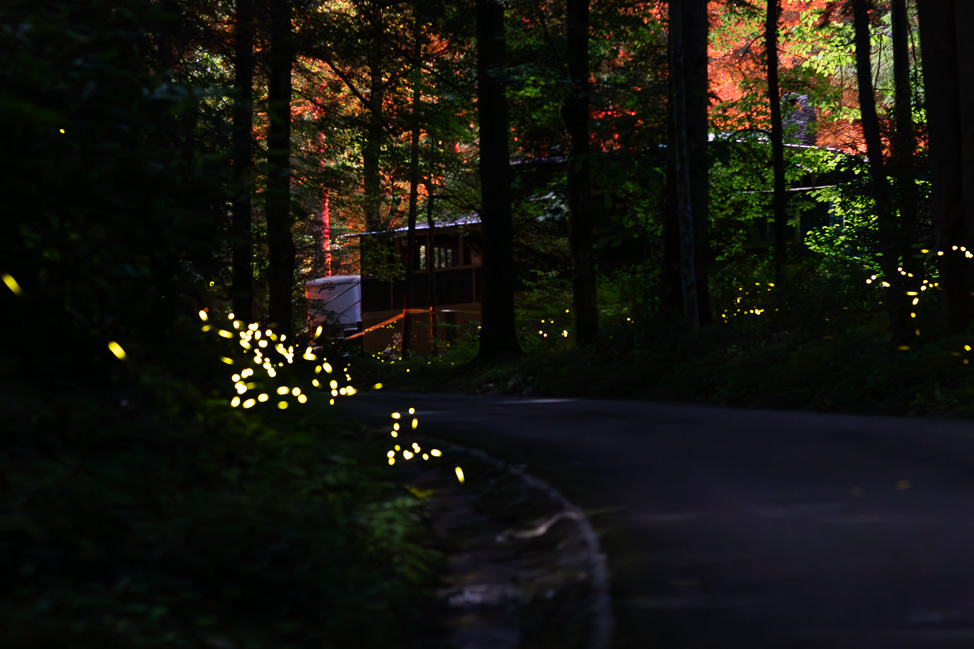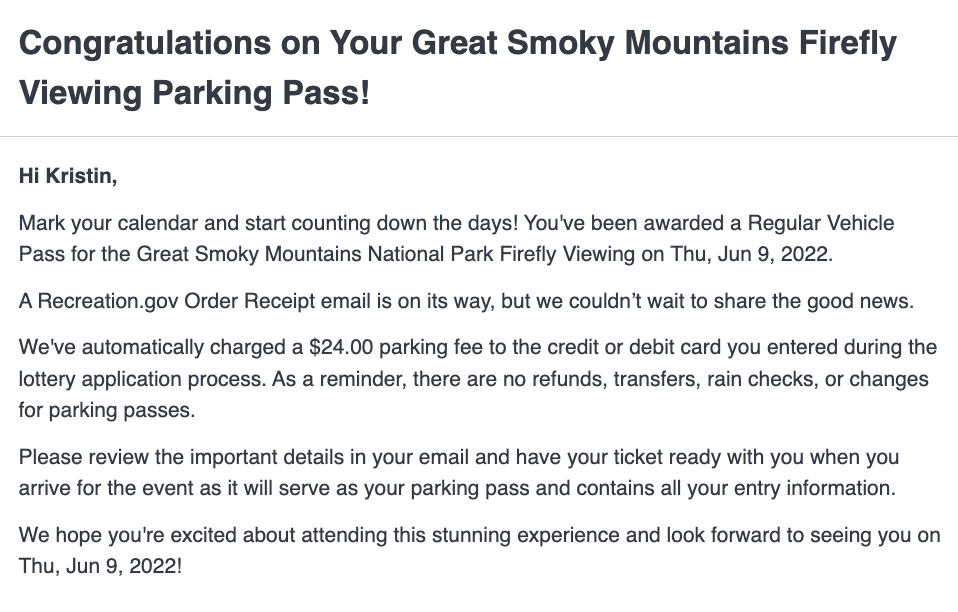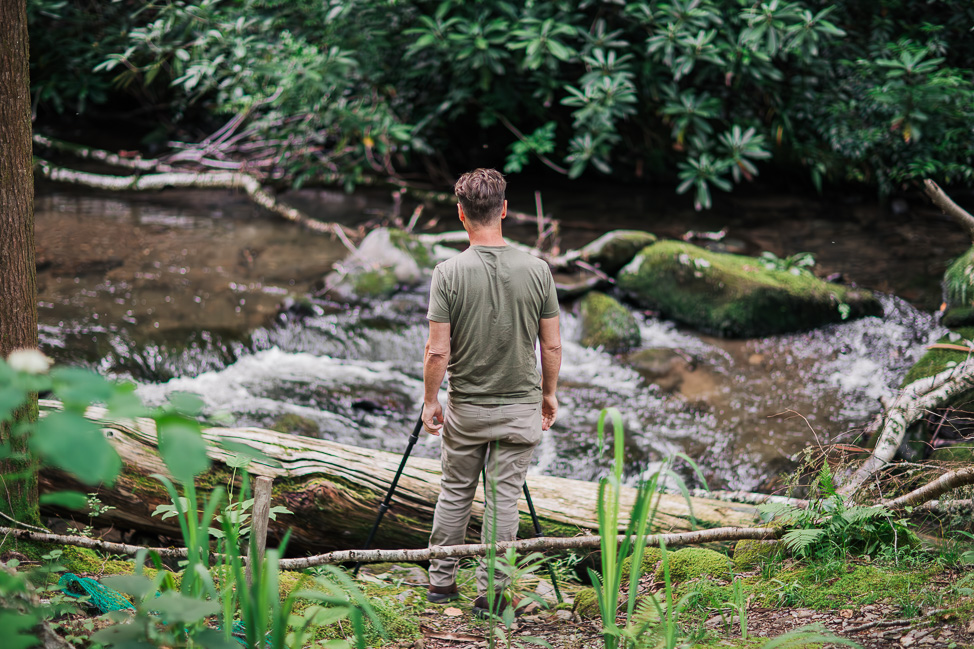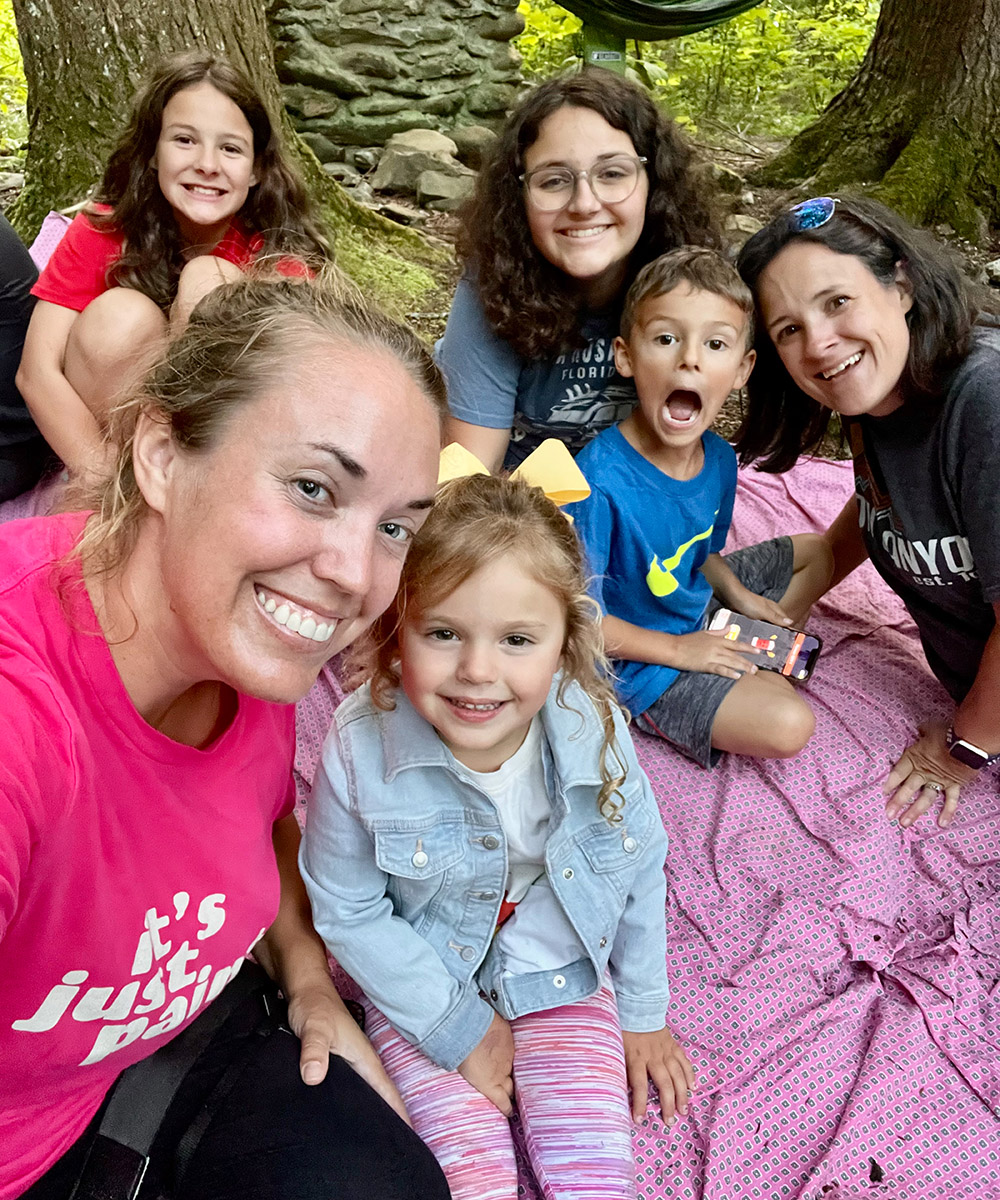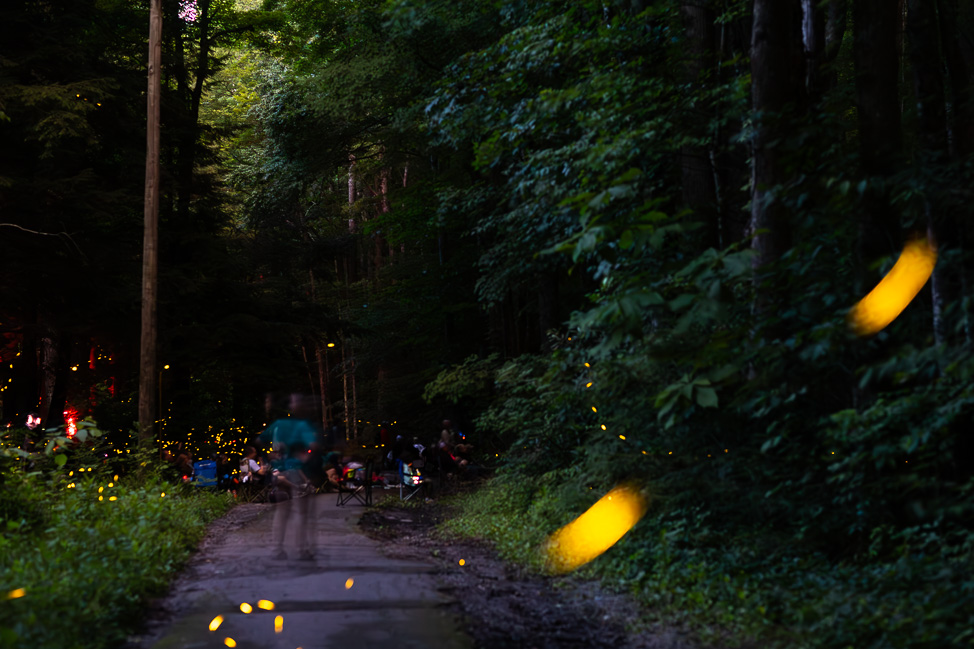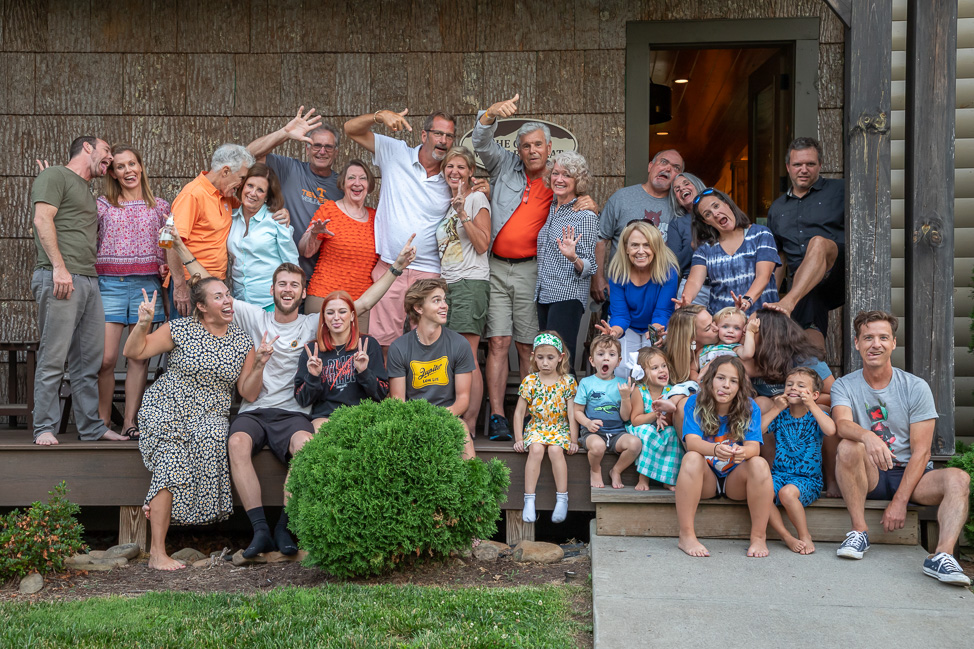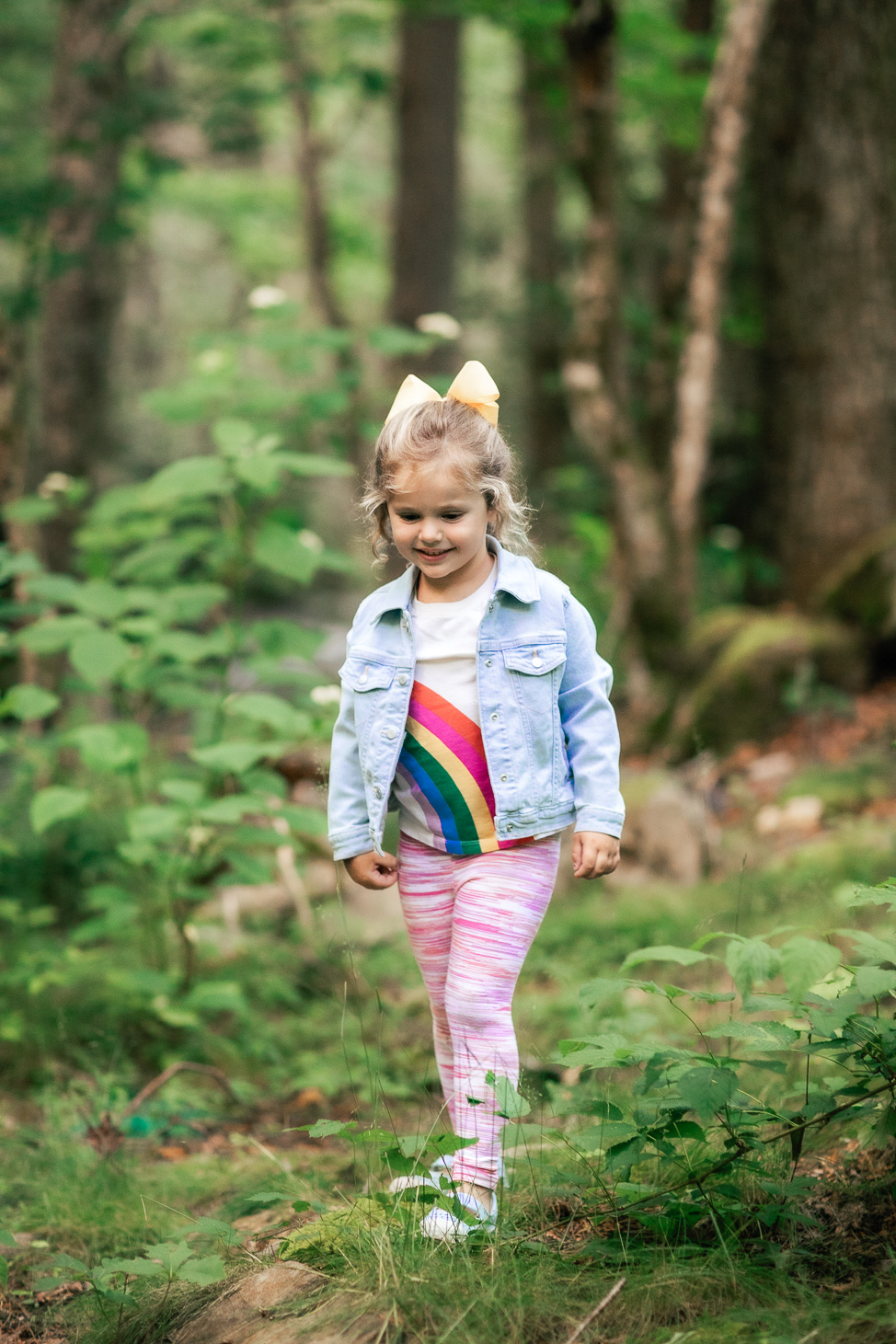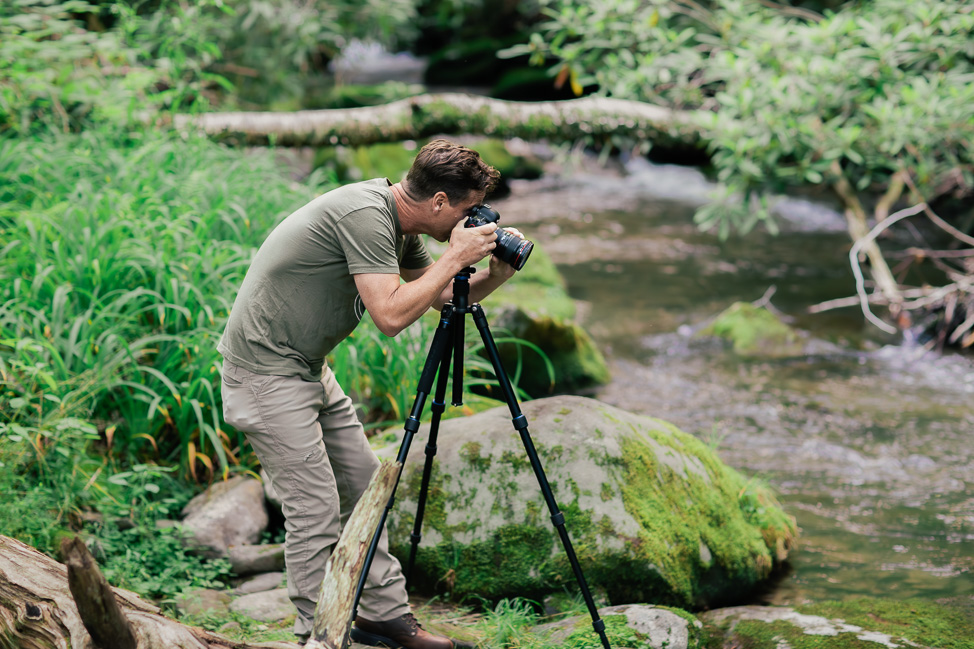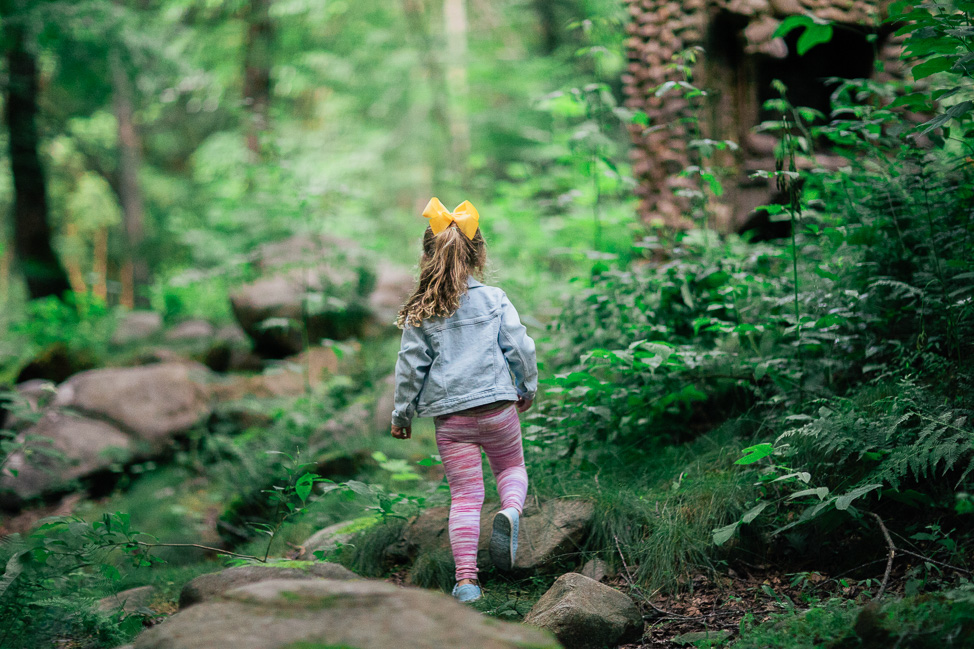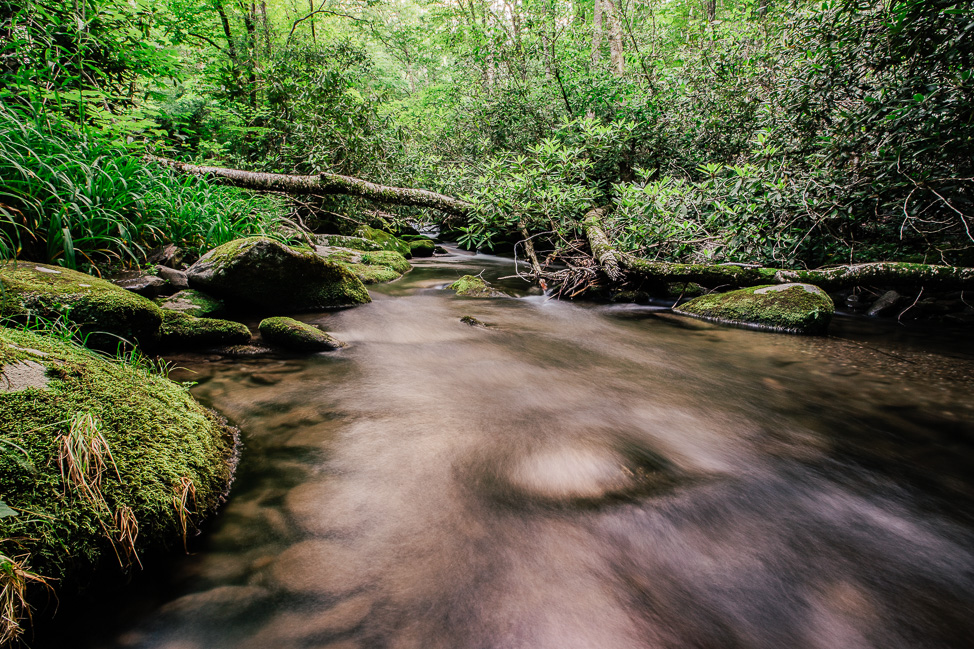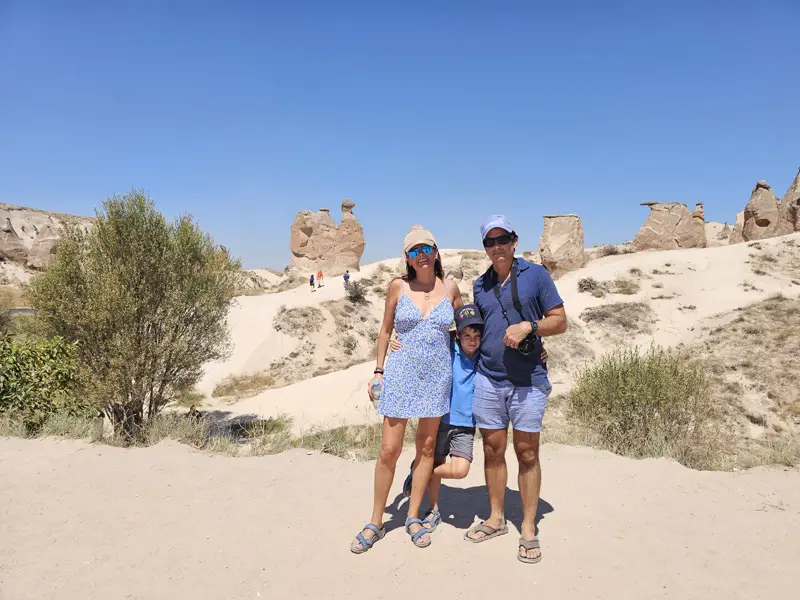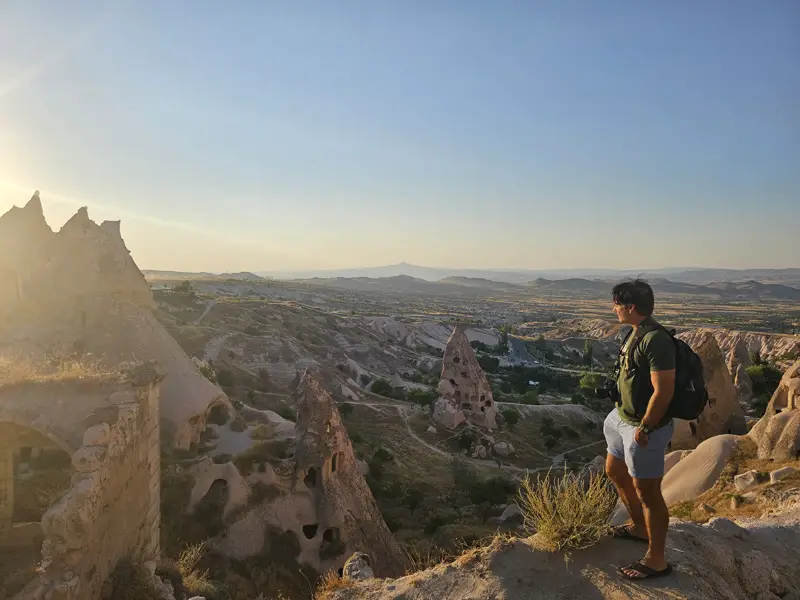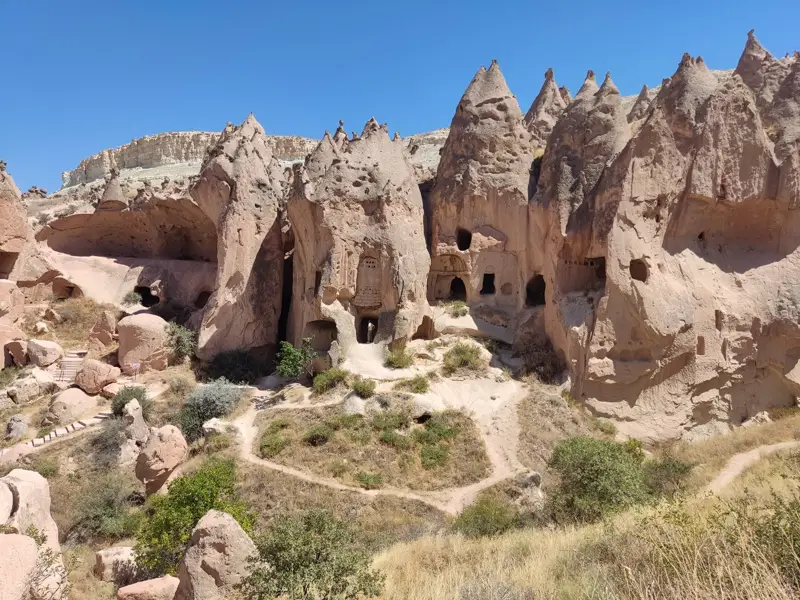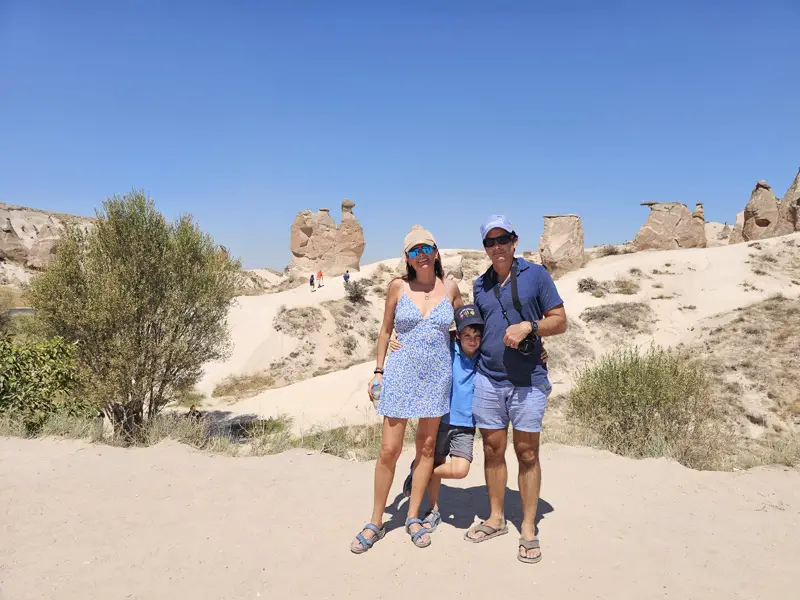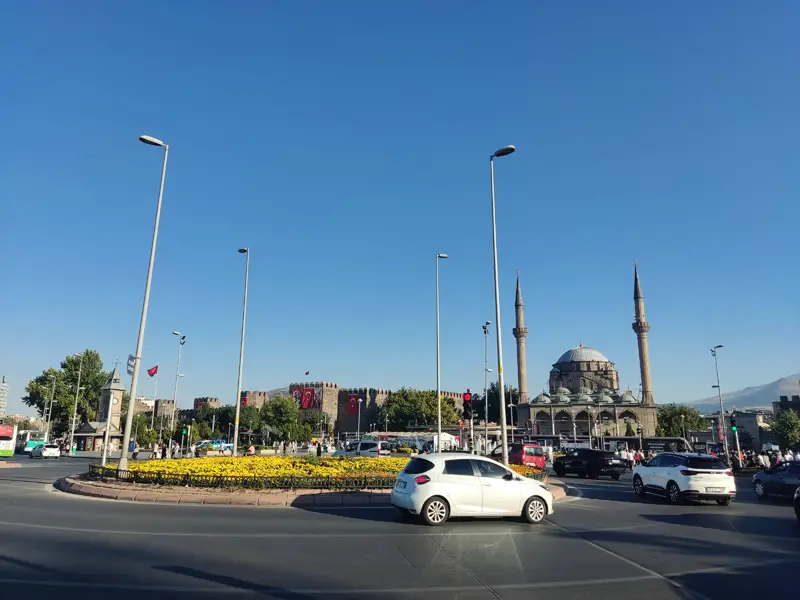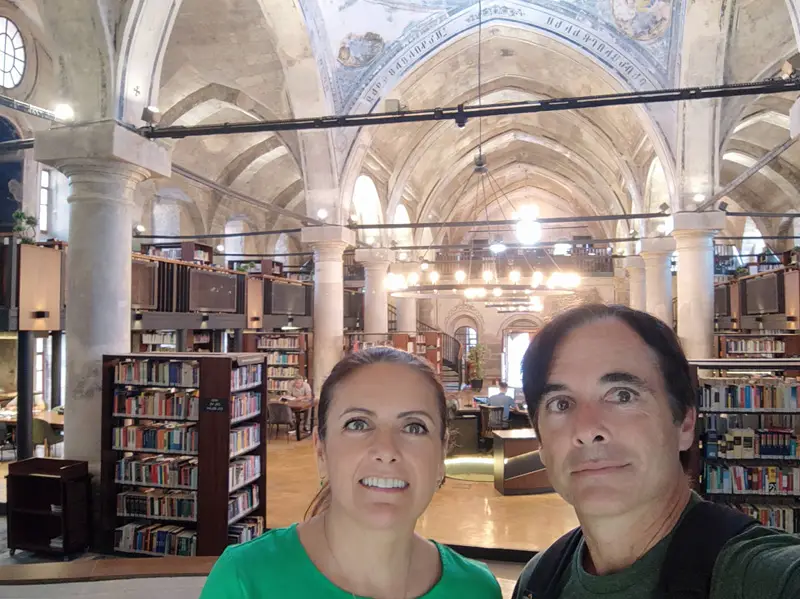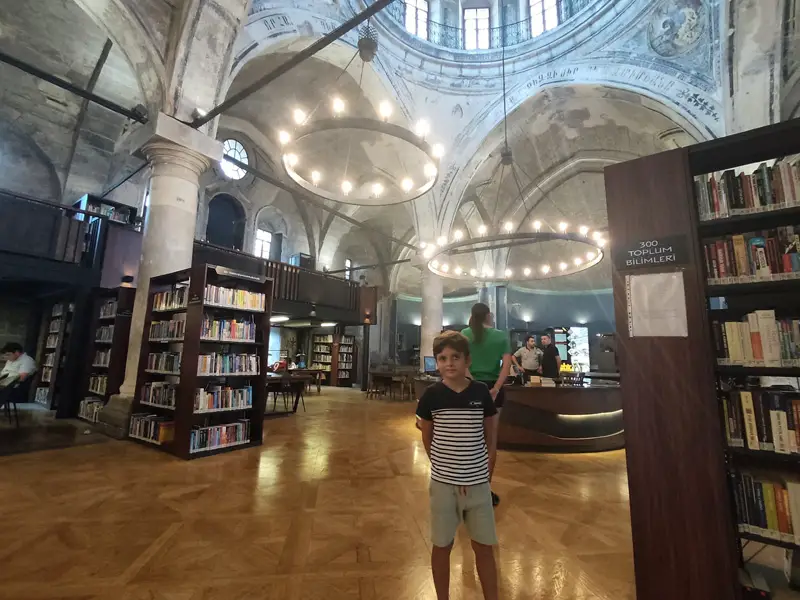It’s no secret that Knoxville ranks high up on our list of must-visit destinations. Much of my family was born there, and I’m a proud graduate of University of Tennessee. But despite my extensive knowledge of East Tennessee’s largest city, the Knoxville arts scene is an ever-changing tapestry of color and innovation that keeps every trip fresh and exciting for even the most seasoned traveler.
If you’re planning a Knoxville weekend trip in the future, here’s everything you need to know about where to stay, eat, visit and get your art on.
Stay at Knoxville’s art hotel
Knoxville’s premier luxury hotel, the Tennessean, opened a few years back adjacent to World’s Fair Park. This hotel has long been a favorite of mine—it was my fourth stay here!—thanks to its well-appointed rooms and location just blocks off Market Square.
Check rates for the Tennessean Hotel here.
The 82 rooms have a distinct Tennessee design with carpeting meant to channel the flow of the Tennessee River and topographical maps hanging on the walls in all the rooms. Each of the floors are named after a river in Tennessee, and there’s even a special Pat Summitt Suite we got to tour on this Knoxville visit. A portion of proceeds from the booking of this suite are donated to the Women’s Basketball Hall of Fame, which we also visited on this trip.
If you know me, you know how much the late Lady Vols coach impacted my life, so seeing an entire guest suite dedicated to her memory was truly something special. I also love the Drawing Room restaurant, which serves breakfast, dinner and a unique-to-the-area tea service daily. Request a room that faces World’s Fair Park.
The floor-to-ceiling windows offer a unique perspective of Knoxville art with the Sunsphere, museum and World’s Fair Park murals all in view depending on your position in the hotel. Request a corner suite for the most epic views, though really you can’t go wrong with any of the Tennessean’s rooms, which are a luxuriously spacious 470 square feet in size at minimum.
If the Tennessean is not available, you’ve got several options in the downtown, including:
- The Oliver
- Cumberland House
- Hilton Knoxville
- Marriott Knoxville Downtown
The Maker Exchange
Within the hotel’s common area, which it shares with the adjoining Marriott Hotel, Maker Exchange debuted just last year and is a game-changer in terms of how spaces can incorporate experiential art. You can feel the masterful craftsmanship of Megan Lingerfelt and Curtis Glover in all corners of this hotel lobby and the art gallery display space that is branded as the Maker Exchange.
Local artist Robin Easter designed all the patterned murals that adorn the walls both inside and outside the hotel, and Lingerfelt and Glover painted them over a three-month period last year. They’re truly remarkable, and the paint job is such a high level of perfection, you may be fooled into thinking they’re wallpaper, but rest assured, this pair of highly sought-after muralists hand-painted every last line.
The oversized great room makes for an opulent and classy display venue for locally crafted paintings, textile and ceramics while providing the hotel with an additional point of interest. An expansive fireplace with seating area, an attached bar, and the Tavern restaurant that overlooks the World’s Fair Park make it hard to beat as a one-stop shop for an afternoon of leisure and artistic absorption.
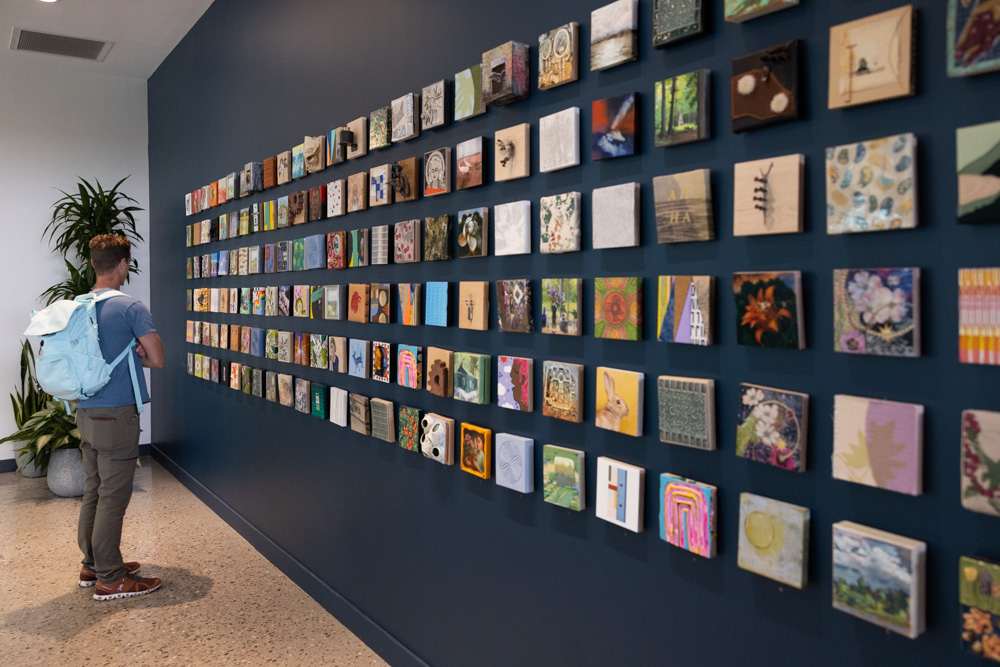
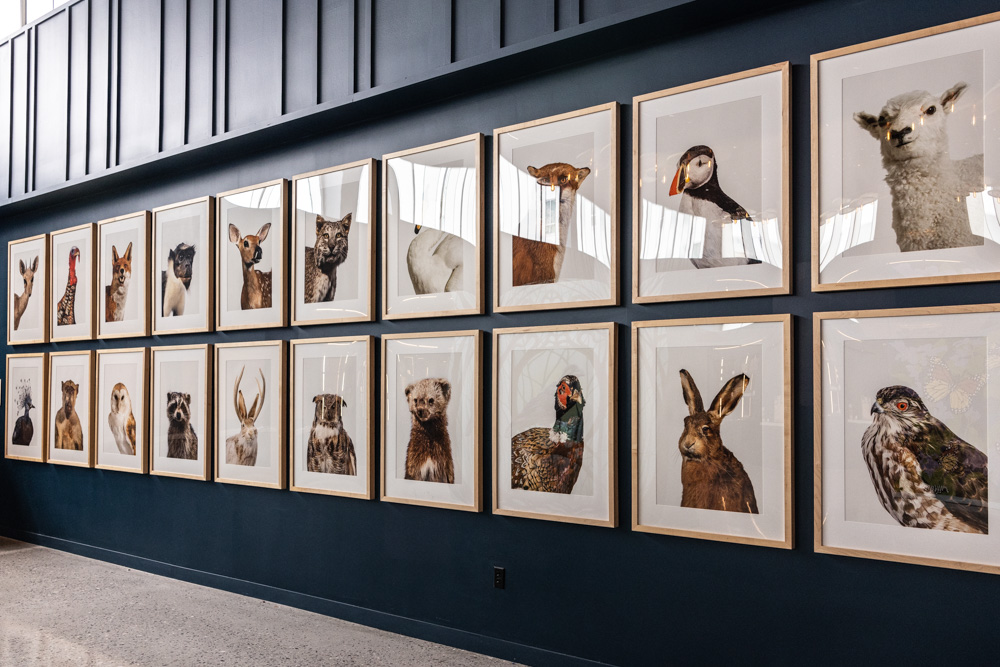
There’s also original art by local makers hanging on the walls throughout the lobby level. See something you like? Everything is for sale. The art gallery, the Curio, which is open to the public and free to peruse, features rotating exhibitions like the final products from the students of Lingerfelt’s recent mural workshops.
The Tennessean’s restaurants and bars
Located on the second floor of the Tennessean, The Drawing Room has a speakeasy-style bar with dapper tuxedoed staff, classic cocktails and a French inspired selection of appetizers and dinner plates. If you’re looking for an elevated place to have a cocktail, this is your place—so long as you promise us you’ll try the signature smoked old fashioned.
An elegant option for breakfast, as well, the Drawing Room whips up all the classics of an American-style diner plus avocado toast, lox bagels and shrimp and grits for those of us that seek out an easy brunch menu.
Need a quick pick-me-up before a day of exploring Knoxville’s art scene? Perk Up at Maker Exchange features specialty coffee drinks made from local roastery Vienna Coffee Company and enjoy it in any of the pleasant vignettes strategically placed throughout the Tennessean’s lobby level.
New to the Tennessean’s menu of activities is the addition of e-bikes, which includes a Pedals and Prosecco e-Biking Experience. The first of its kind locally, the concierge offers fat tire e-bikes to guests for tooling around downtown Knoxville.
Sunsphere Park is also a perfect spot to have a picnic with some bubbly, so take a basket with you and set up shop along the water in World’s Fair Park.
Eat your way through Knoxville’s food scene
Any night out with friends will be served up with a little bit of flair and artistry. Seeking out food options in a college town of more than 40,000 students and countless alumni is always a challenge, not because of lack of options but so many delicious restaurants. Knoxville dishes out some of the finest examples of mindfully curated cuisine we’ve experienced in the South, and these places will give you a taste of that most ancient of craftsmanship: food.
Potchke
It seems like the only place my Knoxville friends go for breakfast or lunch anymore is Potchke, an elevated Jewish bakery with a flair for the cheeky comments, and I wanted to see what all the fuss was about. Potchke thrums with the energy of a well-made lunch consumed in a brightly lit room. Every dish on the menu has a vegan or gluten-free option, and there’s always an interesting variation of house-made seltzers or tonics to try as an accompaniment.
This restaurant is a must-stop for breakfast or brunch and just oozes freshness and spice.
Vida
Located on the ground floor of the thoughtfully remodeled Holsten Building, Vida is one of the hottest destinations for artistic dining and fancy drinks. With a Latin-influenced menu that anchors back to French cuisine, the options for food are a delightful mix of eclectic tapas plates.
Carrots, fennel and ricotta are a popular starter as are the corn croquettes and empanadas; crab cakes, scallops or the pork belly are all wise choices for sharable dishes. The restaurant is also centered around a bar that shakes out a healthy selection of alcohol-forward drinks so it’s also a good spot for a special date or occasion. Be sure and take a peek in the Vault, a speakeasy-like subterranean bar, downstairs before you go.
Kaizen
When we travel, Asian cuisine is always top of our list, and Knoxville restaurants feature several options, our latest favorite of which is Kaizen, an izakaya-inspired Japanese-style pub serving up tapas-style small plates like pork bao buns, tamari-glazes potatoes and hot-and-sour duck noodles. The restaurant also stocks a deep well of whiskey, both Japanese and American varieties.
Simpl.
Situated in South Knoxville (aka SoKno) along one of the most vibrant and ever-changing street art neighborhoods, Simpl. is sandwiched between a couple of breweries and along a popular bicycle route that skirts the Tennessee River. An airy interior with fairly limited seating, it’s best to either arrive early or make reservations for this seasonally driven and Mexican-inspired restaurant.
Sleepy weekend breakfast at this Sevier Avenue joint is popular, and we quickly learned why. The brunch burgers with tomato jam and a sunny egg are fan favorites as is the extensive breakfast cocktail menu.
Other Knoxville restaurants we love:
- J.C. Holdway
- KOYO
- A Dopo
- Sweet P’s BBQ
- Curious Dog
- Brother Wolf
- Osteria Stella
- The Kennedy
- Stock & Barrel
- Lilou Brasserie
- The French Market Creperie
Taste the art of brewing at these Knoxville breweries
One way Knoxville continues to up the ante is with its brewery scene, which is always booming and ever-growing. We’re constantly trying out new spots every time we visit Knoxville, and here are a few of our most recent favorites.
XUL
In the heart of the Fourth & Gill neighborhood just beyond the Old City, XUL is a classic indoor-outdoor space that smells like yeasty bread from the beer-brewing process and immediately sucked us in. With an IPA-, hazy- and sour-forward menu, their brand of fermented beverages are experimental and really, really good. Bonus: There are a significant number of gluten-free beers on tap, a rarity in the brewing world.
The vibe of the taproom—a former 1960’s car showroom—is low-key lounge and with a rotating cast of food trucks parked outside, it’s easy to make an afternoon of visit. Geezers Brewing is in the same development, and Crafty Bastard just a few blocks away.
Yee-Haw
We’ve been fans of this Johnson City-based brewery since it opened in 2015, and it’s been fun to watch it grow into new locations in Nashville and now Knoxville. The expansive indoor-outdoor space is outfitted with turfed areas, big screens for sporting events and game day viewing, booths inside and a Prince’s Hot Chicken Shack outpost for sustenance.
Pretentious Craft Co.
Another long-time favorite brewing company of ours, Pretentious epitomizes Knoxville’s art scene as being possibly the only place in the world where you can drink beer brewed on site from a glass hand-blown just next door, where you can also watch the process from start to finish.
Other Knoxville breweries we love:
- Printshop Beer Co.
- Crafty Bastard Brewery
- Schulz Brau Brewing Company
- Abridged Beer Co.
- Hi-Wire Brewing Taproom
- Alliance Brewing Company
- Last Days of Autumn Brewing
Beer not your vibe? Right in the middle of bustling Jackson Avenue, PostModern Spirits is a craft distillery focusing on spirits like gin that it weaves into its many bar offerings.
Also nearby, Tern Club offers a wide range of rum- and mezcal-forward drinks artfully served up in a very tiki bar-style atmosphere.
Explore Knoxville museums and architecture
Knoxville’s most iconic landmark, the Sunsphere—a 26-story tower with 24-karat-gold glass panes—was built for the 1982 World’s Fair and is undoubtedly the most recognizable building in the city if not the state. For $5, you can now take an elevator to the observation deck during normal business hours on Tuesday through Sunday and see Knoxville from a new perspective.
Spring and summer are fun seasons to visit Knoxville as there seems to be a festival every weekend. Late April always brings the Dogwood Arts Festival, which has been around since 1961, and completely overtakes World’s Fair Park with fine art vendors, live music, entertainment, children’s activities, and food and beverage offerings galore. Early June is our dog Ella’s favorite event, Bike Boat Brew & Bark, alongside the Tennessee River.
Directly across World’s Fair Park from the Tennessean and the Sunsphere, Knoxville Museum of Art offers free admission daily and access to a collection spanning more than 1500 objects. A diverse array of art—paper, paintings, mixed media works, sculpture—the art museum’s primary focus is on mid-19th century to the present. The works are from a mix of regional names and international contemporary artists.
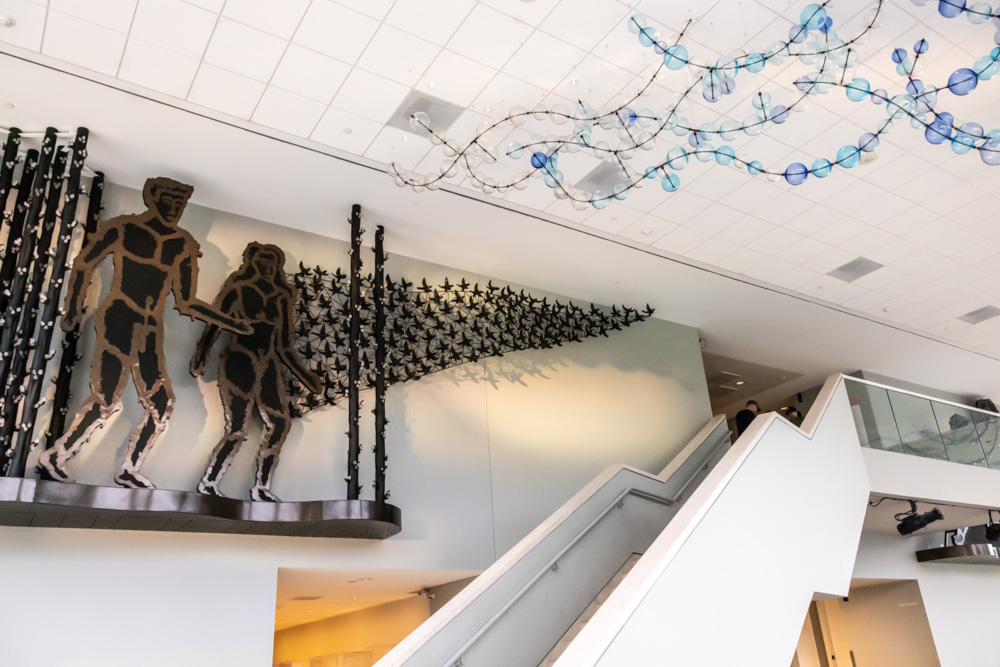

Shop these Knoxville arts mainstays
The south end of Gay Street where it intersects Jackson Avenue is where you’ll find some of Knoxville’s boutiques and artist shops. New to the area last summer is Paris Woodhull Illustrations, the brick and mortar of one of our favorite Knoxville artists who not only paints block-long murals but also turns her own designs into very Instagrammable T-shirts, dish towels, stickers and much, much more.
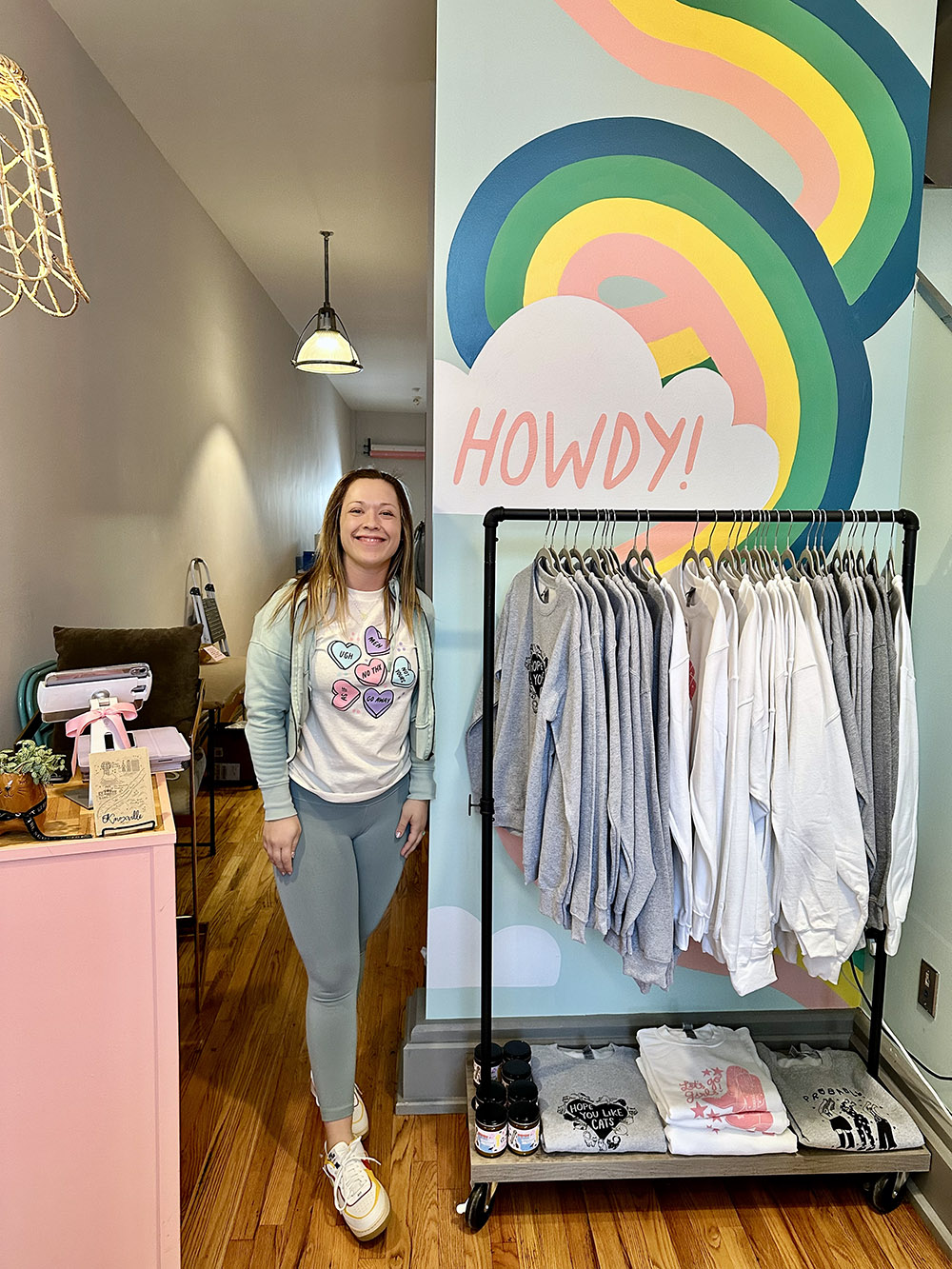
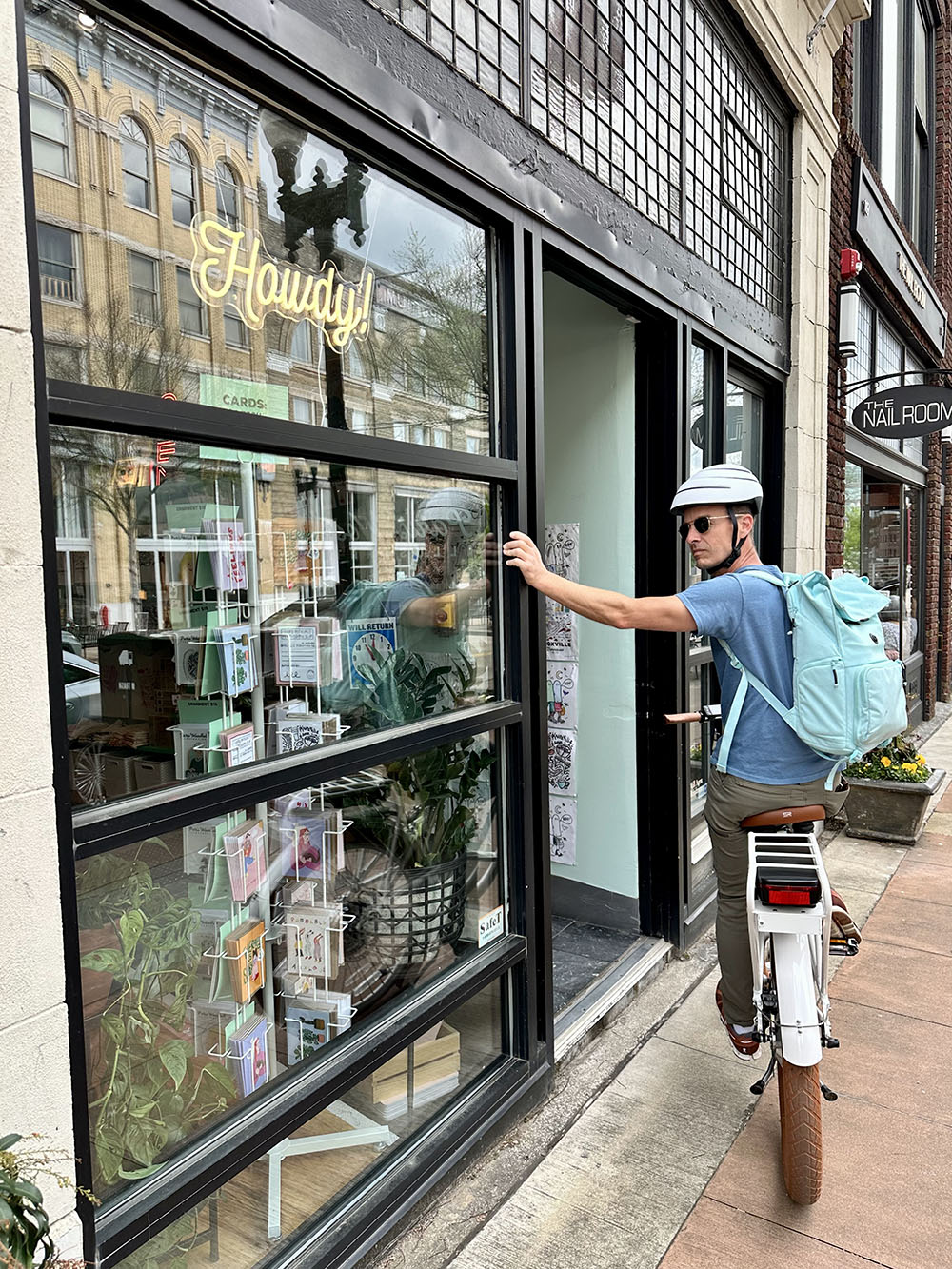
A few doors down, Jacks of Knoxville is a plant shop, cafe and home goods store all rolled into one. Across the street, Addison’s is a bi-level bookstore specializing in rare and old books with more contemporary pre-owned literature in the basement.
Down in the Old City, Rala—which stands for “regional and local artisans”—has been a favorite spot of mine ever since it opened. Directly across from Dogwood Arts Gallery, the boutique stocks an incredibly well-curated collection of goods made by local artists, from graphic Tees to wall art, posters to jewelry. If wearable art is more your forte, Honeymouth makes dopamine-rich leather goods.
See Knoxville’s urban art culture up close
If you make your base at Market Square for the afternoon, you’ll be able to easily walk to the many Knoxville murals and see a variety of urban art while you’re at it.
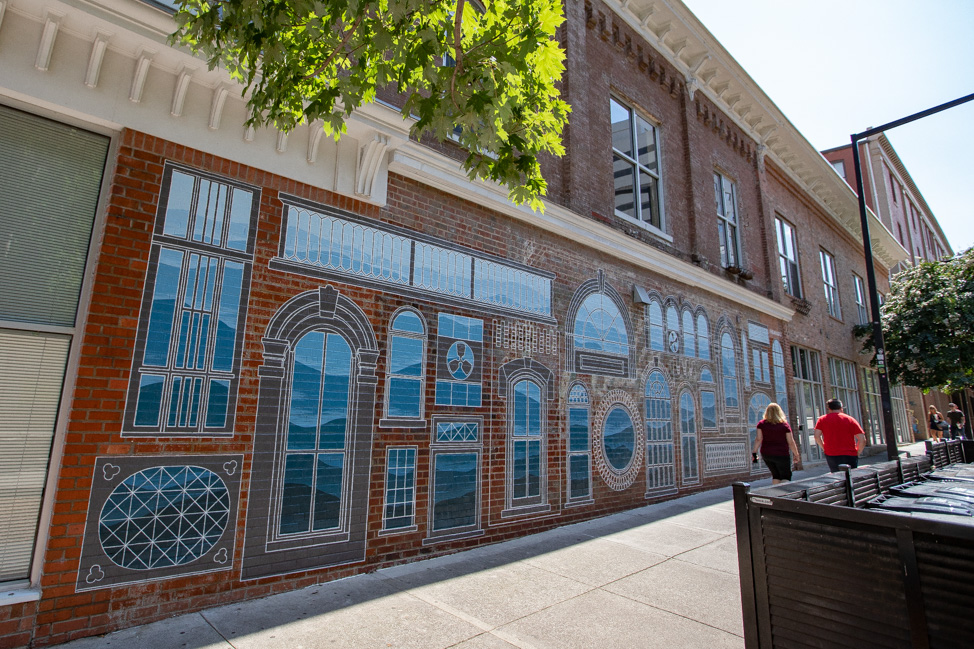

Krutch Park, for example, boasts more than a dozen sculptures—including our favorite, a dog fixated on a ball—throughout its acre domain, as well as water features and a pair of women’s suffrage monuments.
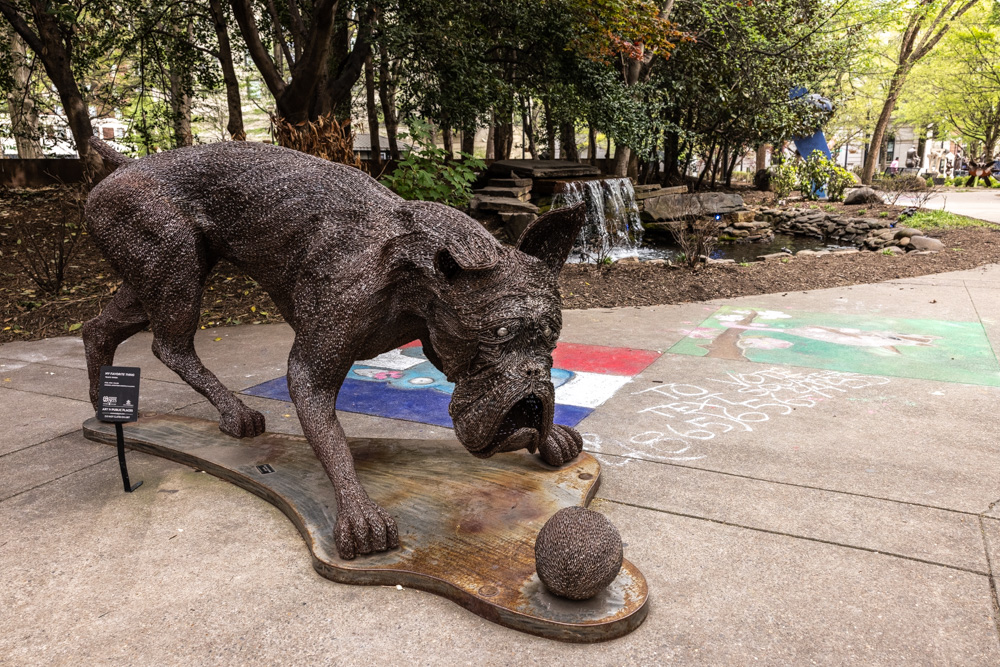
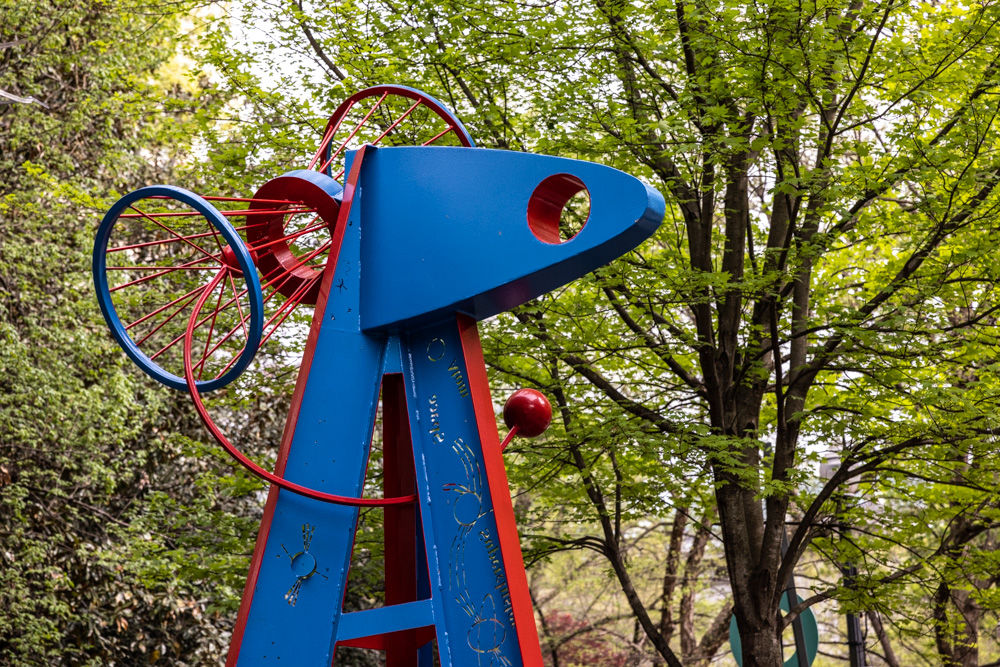
No matter the time of year you’re visiting Knoxville, there is bound to be something going on within Market Square’s perimeter, whether free jazz in the summer or the uber-cool Chalk Walk Knoxville held each April. We caught the tail end of the chalk paintings just before the spring rain washed them away.
Not even a block away toward Gay Street, you’ll find yourself in Strong Alley, the entrance of which is a rotating seasonal mural by Megan Lingerfelt, a fun whimsical painting by Paris Woodhull, a handful of other urban art vignettes. At the other end is, of course, a Dolly Parton mural.
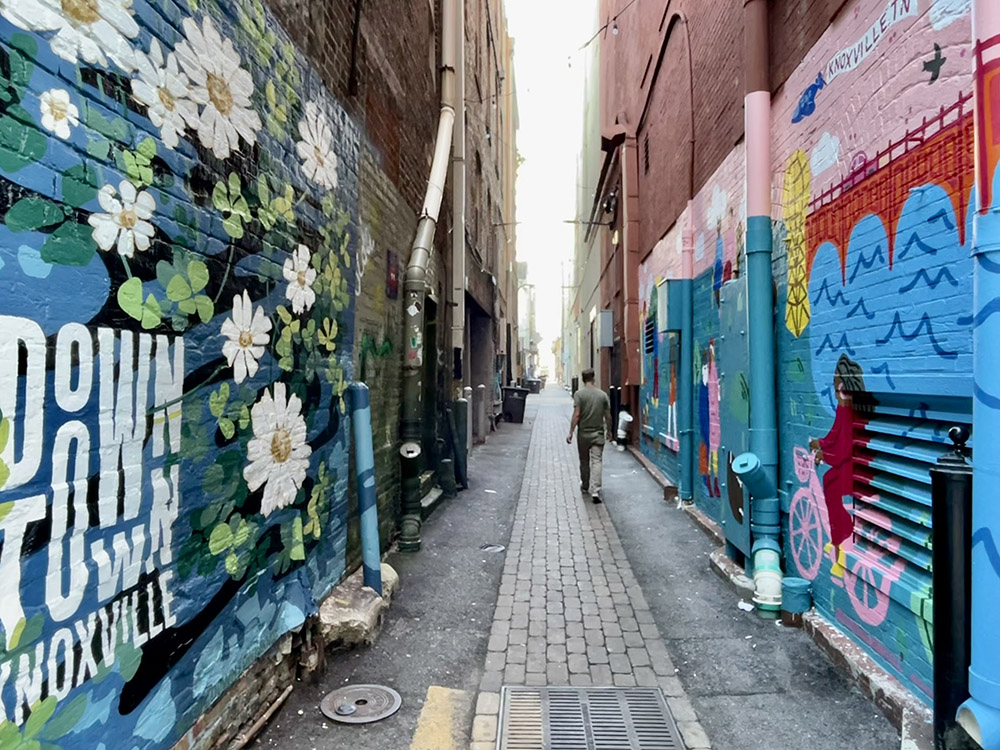
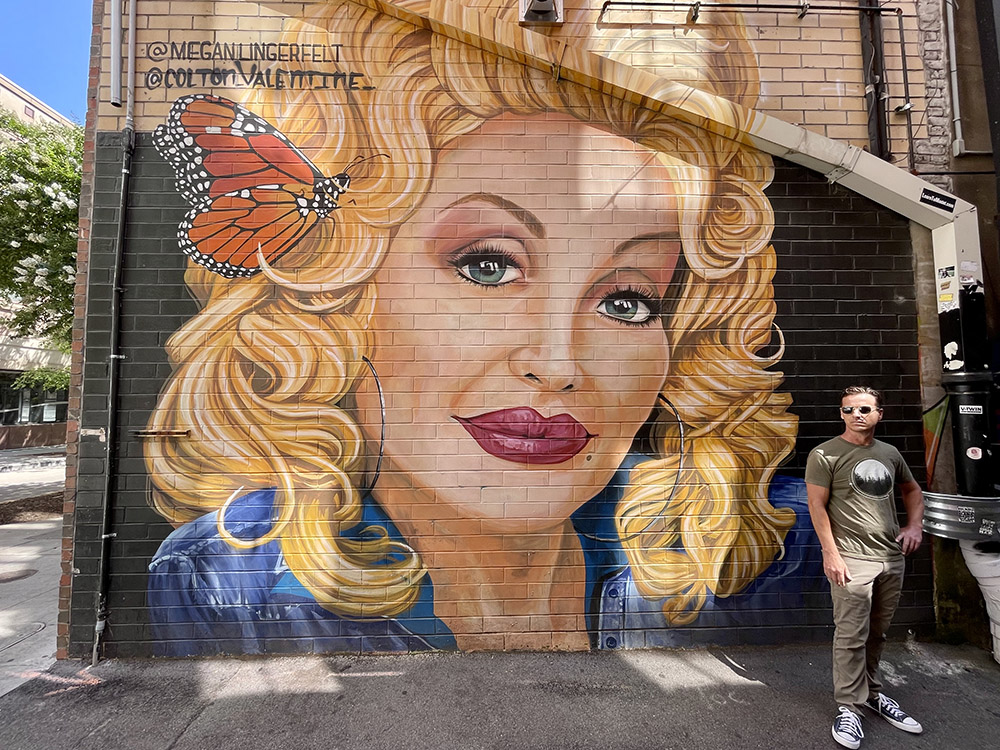
If you dig a grittier art scene, SoKno is where you’ll find much of Knoxville’s graffiti, especially if you detour from Sevier Avenue onto Island Home where the walls are fortified with urban art. Also in South Knoxville is Paris Woodhull’s “Victoria” mural on the side of Printshop Beer Co. I may be a tad bit biased—our nonprofit spearheaded this mural as part of our Walls for Women project—but I think it’s the best art and beer in the city!
Peruse the many Knoxville art galleries
The Knoxville arts would be nothing without its richly diverse community of artists, patrons, styles and cultural institutions. A great time to visit Knoxville is on First Friday when many of the shops and art galleries along Gay Street, Market Square and the Old City have extended hours, as well as live music and food vendors.
Located in a nationally historic building built in 1890 in Emory Place, Pivot Point Gallery is a two-story art gallery highlighting the work of local artists, regional artists and national artists. Personally, I loved this mix of style and background; it made for an incredibly eclectic body of work. Next door, Lilienthal Gallery brings avant-garde international exhibitions to the Maker City. While we were there, this upscale Knoxville gallery housed the stunning three-dimensional work of female Israeli artists.
Be sure and check out these Knoxville galleries, too:
- The Art Market
- The Emporium
- UT Downtown Gallery
- Arrowmont Gallery
- RED Gallery
- Dogwood Arts Gallery
Have you been to the Maker City? Were you just as impressed by the Knoxville art scene as we were?

